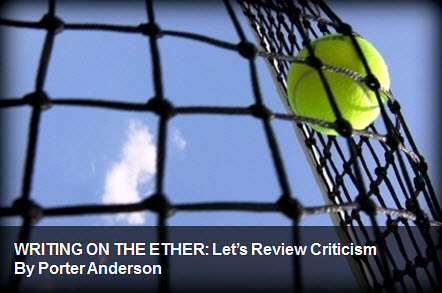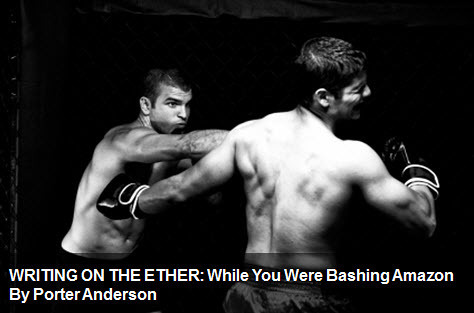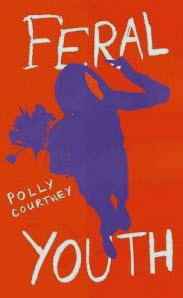Jane Friedman's Blog: Jane Friedman, page 175
July 2, 2013
The Problem With Overly Nice Characters by Jane Friedman
This past spring, the literary world burst into debate when novelist Claire Messud was questioned by Publishers Weekly about the protagonist of her new novel. The interviewer asked, “I wouldn’t want to be friends with Nora, would you?” To which Messud responded, “For heaven’s sake, what kind of question is that?” (Read the full interview here.)
I was reminded of that exchange when reading E.A. Durden’s piece for Glimmer Train, “Against Decency: Leading Your Characters Astray.” She writes:
What’s wrong with overly nice characters? To begin with, they’re boring. They do to plot what Round-Up would to a tomato plant. This is because they can’t abide conflict, and smooth it over every chance they get. Compare that to Denis Johnson’s characters, say, or Flannery O’Connor’s, who can’t step off the front porch without pissing somebody off. Conflict, as we know, is oxygen to fiction. Yet somehow I forget as a writer what I love as a reader, and, if I’m careless, end up with characters who get along with everyone, who start to seem like someone I’d want to marry. Would you want to marry a Flannery O’Connor character?
Read the full piece at the Glimmer Train bulletin. Or, check out the following:
Notes on the Not So Secret First Rule of Writing by Ron Savage
My “Writing Career” Was an Accident by Christopher Lukas
Meaningful Dialogue by Ming Holden
The post The Problem With Overly Nice Characters appeared first on Jane Friedman and was written by Jane Friedman.
June 29, 2013
3 Reasons Why a Facebook Page Can’t Replace an Author Website by Jane Friedman
Quick note: This Tuesday, I’m teaching one of my most popular online classes: how to establish your own author website using the WordPress system. Click here for more details.
I was recently talking with a debut novelist who was advised by someone in the publishing industry that a Facebook author page would be OK to use instead of creating an author website.
I’ve occasionally been asked by authors at conferences: Why not just use Facebook? Isn’t that where everyone is spending their time already? Why would people visit my site? Why bother with all the effort of establishing a site, which, if it becomes dusty or out-of-date, could be more damaging than no website at all?
First, I’ll address why it’s a bad idea to use Facebook as a substitute for your author website.
1. People may leave Facebook.
I remember the very first fan page I created for Writer’s Digest—and it wasn’t on Facebook or Twitter. It was on MySpace. Guess how many people visit that page now?
It may be hard to envision, but Facebook may eventually lose favor. Google Plus may become more popular, or it may be an entirely new site or technology not created yet. It’s impossible to predict. But by choosing Facebook instead of an author website, you are favoring the short-term over the long-term. You are investing your time and energy in a platform that may not pay you back in several years’ time. Maybe it benefits your current campaign or initiative—but you can never be sure it’s going to benefit your second or third project.
In the meantime, your author website remains undone, and people who don’t use Facebook become incredibly difficult to identify and reach.
2. Facebook is not under your control.
This is pointing out the obvious, but authors don’t take it seriously enough. You can never control what Facebook does—with its design, with its user interface, with your likes/followers, with its functionality, with its ad displays. You’re limited in how you can optimize the experience, and your insights (metrics) are limited to what Facebook itself measures and decides to pass onto you.
Many people and businesses received a rude awakening when Facebook adjusted its algorithms so that only the most popular status updates would be seen by most fans of a page. If you want to reach ALL fans who’ve liked your page, you now have to start paying money.
That said, it’s true that a site with 1 billion users has attractive qualities to anyone building an online presence. I’m not saying ignore Facebook, but realize you don’t call the shots.
3. A website is the most effective way to deliver information to your audience.
Your author website serves as a hub for all your activity—online and offline. Imagine the following scenarios:
A potential reader hears about your book from a friend. They Google your name or book title. Where do they end up? If you don’t have a website, they probably land on Amazon. That may not be a bad thing, but what if …
A reader finishes your book, loves it, and wants to see if you have any book club materials, readings or events, or other opportunities to enrich the experience they’ve just had. They Google your book title. What do they find?
A reader finishes your book, loves it, and wants to find other things you’ve written. That reader may explore Amazon, go back to Google and search for your author page, or find your Facebook page. Will they be able to find what they’re looking for?
Someone in the media hears about your book and wants to contact you. They run a Google search. What do they find?
A conference organizer reads your book and thinks you’d make a great speaker. They run a Google search. What do they find?
You probably see the common thread here. When people seek information, they often go to Google to search for it. People won’t be inclined to visit Facebook when they have a specific goal or information they’re seeking. Why? Because Facebook is a soft connection tool, for people to stay in touch in a very organic way. It’s not about structured information delivery, but conversation and social engagement.
A website, on the other hand, serves as a hub for all people who are interested in your work and are seeking more information or updates directly from you. It doesn’t matter if they heard about you online or offline, people are trained to use their mobiles, tablets, and desktops to search for more information, and your author website is a 24/7 resource waiting for them.
I haven’t even touched on the many other reasons an author website is essential to your long-term development as an author. They include:
Developing an e-mail newsletter list that puts you in direct contact with your true fans (this is like money in your pocket, a long-term investment that pays off hugely over time)
Making your other online efforts more effective—or making people aware of all the places you’re active. For instance, the No. 1 way people find out about me on Facebook (and end up subscribing to my feed) is because they’ve visited my website or read my blog.
Offering many ways for your fans to engage. Aside from having an e-mail newsletter, you may offer ancillary materials that fans would enjoy, such as additional chapters, resources, book club materials, etc.
But isn’t a bad website worse than no website at all?
It actually takes effort these days to have a bad website, given today’s website building tools such as WordPress.
I also have to wonder why your website would be out-of-date or damaging to your career if you continue to write and publish. The only reason I can imagine is if you had a website built in the way it was done 10 years ago, when you needed a web developer or programmer to be the “webmaster.” Today, if you create a new website, it should be done in such a way that it’s easy for YOU the author to maintain and update—no more difficult than if you were updating a Word document.
Sure, you may need to spend a couple hundred dollars every year or two for a developer to assist with a redesign or functionality add-ons. But for anyone with a long-term author career, this is one of the best and most critical investments you can make.
For more on author websites and Facebook, visit these other posts I’ve written (unless otherwise noted):
3 Ways to Improve Your Author Website Today
10 Ways to Build Long-Lasting Traffic to Your Author Website or Blog
Is Your Author Website Doing Its Job? 6 Things to Check by Laura Pepper Wu
3 Ways to Improve Your Website Design by Penny Sansevieri
Your Homepage Is Not As Important As You Think by Dan Blank
4 Ways to Immediately Improve Your Book Marketing Efforts
Facebook Strategy for Authors: In-Depth Discussion
Using Facebook to Amplify Your Reach and Not Annoy People
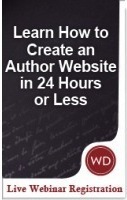 Need a quick tutorial on how to establish your own author website? I’m teaching a class this Tuesday on how to do it in 24 hours or less, using the WordPress system. Click here for more details.
Need a quick tutorial on how to establish your own author website? I’m teaching a class this Tuesday on how to do it in 24 hours or less, using the WordPress system. Click here for more details.
The post 3 Reasons Why a Facebook Page Can’t Replace an Author Website appeared first on Jane Friedman and was written by Jane Friedman.
June 28, 2013
5 Traps of the Imagination John Grisham Helped Me See by Tony Vanderwarker
Today’s guest post is by author Tony Vanderwarker (@VanderwarkerT).
I had 7 unpublished novels languishing away on my hard drive and an overflowing shelf of rejection notices when John Grisham—a friend and neighbor—took me under his wing and taught me his writing secrets.
When he offered to help, you could have scraped me off the ceiling. Expecting he was going to give me the magic formula to creating bestsellers, my imagination fired up visions of auctions with publishing houses vying for my book, six-figure advances, and movie deals. I was on cloud nine and ready to crack open the champagne.
But John believes in brutal honesty, and brutal he was. He put me through a year of writing outlines before I could write word one of the novel, having me scrap the whole thing several times and start again. Then he savaged my first draft—tore it to pieces, didn’t even read the whole thing. Mocked parts of it openly, too. Most writers go through some form of hell, but with John Grisham looking over my shoulder, I went through hell on steroids: his formidable success made it easier to hope that my own was in reach, but his brutal honesty knocked me to the ground and into a heap of self-doubt over and over again.
It was a roller coaster ride, but eventually I learned to recognize the dangerous traps my imagination was pushing me into. I think you’ll recognize them, too.
1. Salivating
This one’s fun. It’s dreaming of the gleaming red Boxster you’re going to rush down to the dealer and buy when your six-figure advance comes in. Not only is it distracting, but since only a few percentage of books ever sell more than 5,000 copies, it’s guaranteed to build you up for a big crash when you realize your baby will not even make the top 50,000.
Keep the juices for the writing, not the pie-in-the-sky rewards, and you’ll be better off for it.
2. Surrendering
In other words, getting up from your keyboard, slamming your first draft down on the floor, and stalking out of your writing room, muttering, “That’s it, I’m giving up, it’s too damn hard.”
We’ve all been there. The slope seems too steep, the rocks keep rolling down at you, the wind’s whipping up, and you’ve had enough.
But you—and only you—can make this work. Sometimes all it takes is a little distance so you can pull yourself up and regain perspective. Then forge on, like Faulkner did, or Hemingway, or any writer worth his or her salt. Goes with the territory.
3. Over-reading
You get a rejection notice from an agent or publisher. The big N-O. But instead of letting it go, shrugging it off as no big deal, you lie awake at night, or stare out over your screen and wonder what, exactly, the phrase, “Sorry, Tony, but this didn’t work for me” meant. Was the opening all wrong? The main character not likeable enough? The story just not compelling? Is that why the agent or publisher hated it?
I’ve done it too many times, gone down the road of, “Well, they represent X or Y and their stuff is really charged, so maybe I need to electrify my prose, then they’ll like it more. Or maybe I should tweak this, or that, or this, or …”
STOP. You are reading too much into the rejection. Just let it go.
4. Over-reacting
Once I got three rejection notices in one day. I felt like the boxer up against the ropes being pummeled to death by his opponent. The whole world was against me, I was never going to publish—as if these three agents had conspired to all mail on the same day to let me know I’m a hopeless case.
This is one of the easiest traps we can fall into because a writer’s life is full of rejections. It’s an axiom that not everyone is going to like everything you do. Grisham was rejected many times, so was King and Faulkner and Fitzgerald.
5. Saying no
I really mean saying no too soon. I’ve said it a million times to myself: “That’ll never work.” It’s a total cop out, a denial of your own talent and ability to come up with a workaround to whatever problem you’re facing. And it’s the easy way out.
You know what Nancy the Navigator in your car GPS does when you don’t follow her directions? She quickly recalculates and sends you on a new route to your destination.
Instead of saying no, start looking for a way around, a route over or under your problem. I had this idea about writing a book about the experience of being mentored by John Grisham while penning a novel. Told myself no at first, did the whole “that’ll never work” thing. But I took five runs at it and on the fifth I finally broke through. It never would have happened had I kept on saying no. (The book releases in January 2014 from Skyhorse.)
Don’t let your creative mind work overtime and spin these tails of impossible success, incompetence, woe, or failure. As Wordsworth said, “We half create the world we see.”
The post 5 Traps of the Imagination John Grisham Helped Me See appeared first on Jane Friedman and was written by Tony Vanderwarker.
5 Traps of the Imagination John Grisham Helped Me See
Today’s guest post is by author Tony Vanderwarker (@VanderwarkerT).
I had 7 unpublished novels languishing away on my hard drive and an overflowing shelf of rejection notices when John Grisham—a friend and neighbor—took me under his wing and taught me his writing secrets.
When he offered to help, you could have scraped me off the ceiling. Expecting he was going to give me the magic formula to creating bestsellers, my imagination fired up visions of auctions with publishing houses vying for my book, six-figure advances, and movie deals. I was on cloud nine and ready to crack open the champagne.
But John believes in brutal honesty, and brutal he was. He put me through a year of writing outlines before I could write word one of the novel, having me scrap the whole thing several times and start again. Then he savaged my first draft—tore it to pieces, didn’t even read the whole thing. Mocked parts of it openly, too. Most writers go through some form of hell, but with John Grisham looking over my shoulder, I went through hell on steroids: his formidable success made it easier to hope that my own was in reach, but his brutal honesty knocked me to the ground and into a heap of self-doubt over and over again.
It was a roller coaster ride, but eventually I learned to recognize the dangerous traps my imagination was pushing me into. I think you’ll recognize them, too.
1. Salivating
This one’s fun. It’s dreaming of the gleaming red Boxster you’re going to rush down to the dealer and buy when your six-figure advance comes in. Not only is it distracting, but since only a few percentage of books ever sell more than 5,000 copies, it’s guaranteed to build you up for a big crash when you realize your baby will not even make the top 50,000.
Keep the juices for the writing, not the pie-in-the-sky rewards, and you’ll be better off for it.
2. Surrendering
In other words, getting up from your keyboard, slamming your first draft down on the floor, and stalking out of your writing room, muttering, “That’s it, I’m giving up, it’s too damn hard.”
We’ve all been there. The slope seems too steep, the rocks keep rolling down at you, the wind’s whipping up, and you’ve had enough.
But you—and only you—can make this work. Sometimes all it takes is a little distance so you can pull yourself up and regain perspective. Then forge on, like Faulkner did, or Hemingway, or any writer worth his or her salt. Goes with the territory.
3. Over-reading
You get a rejection notice from an agent or publisher. The big N-O. But instead of letting it go, shrugging it off as no big deal, you lie awake at night, or stare out over your screen and wonder what, exactly, the phrase, “Sorry, Tony, but this didn’t work for me” meant. Was the opening all wrong? The main character not likeable enough? The story just not compelling? Is that why the agent or publisher hated it?
I’ve done it too many times, gone down the road of, “Well, they represent X or Y and their stuff is really charged, so maybe I need to electrify my prose, then they’ll like it more. Or maybe I should tweak this, or that, or this, or …”
STOP. You are reading too much into the rejection. Just let it go.
4. Over-reacting
Once I got three rejection notices in one day. I felt like the boxer up against the ropes being pummeled to death by his opponent. The whole world was against me, I was never going to publish—as if these three agents had conspired to all mail on the same day to let me know I’m a hopeless case.
This is one of the easiest traps we can fall into because a writer’s life is full of rejections. It’s an axiom that not everyone is going to like everything you do. Grisham was rejected many times, so was King and Faulkner and Fitzgerald.
5. Saying no
I really mean saying no too soon. I’ve said it a million times to myself: “That’ll never work.” It’s a total cop out, a denial of your own talent and ability to come up with a workaround to whatever problem you’re facing. And it’s the easy way out.
You know what Nancy the Navigator in your car GPS does when you don’t follow her directions? She quickly recalculates and sends you on a new route to your destination.
Instead of saying no, start looking for a way around, a route over or under your problem. I had this idea about writing a book about the experience of being mentored by John Grisham while penning a novel. Told myself no at first, did the whole “that’ll never work” thing. But I took five runs at it and on the fifth I finally broke through. It never would have happened had I kept on saying no. (The book releases in January 2014 from Skyhorse.)
Don’t let your creative mind work overtime and spin these tails of impossible success, incompetence, woe, or failure. As Wordsworth said, “We half create the world we see.”
The post 5 Traps of the Imagination John Grisham Helped Me See appeared first on Jane Friedman.
June 27, 2013
WRITING ON THE ETHER: Let’s Review Criticism by Porter Anderson
Table of Contents
More Critics Than You Can Shake a Fist At
Art vs. Entertainment / Criticism vs. Reviewing
Why Ask Why?
More Critics Than You Can Shake a Fist At
Do you follow tennis? Observe the shaking of the fist.
Most of the world-class athletes at the All-England Club right now (including those being sent home alarmingly early) are not fistfight folks. But have a look: fist pumps.
In almost any Wimbledon match, male or female, you’ll find the players shaking their fists, normally after winning points. As if at any moment, they might deck their opponents or punch out the ball kids.

This compilation of shots is from ESPN’s Facebook page, June 26, 2013. Fist-pumping indicators added.
Nobody follows these athletes more happily than I do. But that pumping of the fist looks showy at best on these immaculate, gifted, hard-working, smart people. It’s largely a ritual, a mannered iteration of a once-genuine gesture. It’s what you do with the hand not holding the racket. On one, it looks more like he’s shaking dice. On another, it looks like she’s grabbing fireflies. And, hey, it looks no better on the fans in the stands, these lovely, mild-mannered, bespectacled, brolly-toting rain dodgers…fist pumping?
It’s a cultural affectation. The shaking of the fist.
Could that be what’s become of literary criticism, too?
A significant disadvantage of the world of book recommendation is that we never hear about books that don’t live up to their promise. The bad books. Yes, I’ve heard the “We don’t have time for bad books” argument, and while that works for recommending titles to genteel associations, it stinks when it comes to creating and maintaining a lively culture.

Bethanne Patrick
In Why Literary Criticism Still Matters at Virginia Quarterly Review, Bethanne Patrick begins asking some important questions to which we’re paying too little attention these days.
Think of literary criticism as a round robin of matches being played on the outer courts of the big tournament. The industry! the industry! is fixated on its Centre Court melodrama. While we watch traditional major players slip and slide, fall on their grass and suffer mortifying injuries, we aren’t focused on what’s happening to literary criticism.
Patrick’s good questions lie under the header “Internet democratization.” Many good things have accrued from the digital dynamic. But the recommendation culture, in and of itself, may not be one of them, not entirely, if it’s allowed to replace real criticism.
Patrick, a critic, herself (as am I), writes:
This isn’t necessarily a problem for publishers. Publishing is a business, not an arts collective. This is a problem for authors and readers. If we want to have a balanced and literate literary culture, we have to be ready to name good books and bad books—and even to name the good and the bad within a single book, which is what the best book critics do on a regular basis.
Let’s look at a couple of changes that you and many others might have noticed only in sidelong glances on our way to the larger, central debates of the disruption.

One of VQR’s “instapoem” collection being curated by Robert Lee Brewer
Art vs. Entertainment / Criticism vs. Reviewing
It’s not uncommon for some readers to be adamantly put out with me when I bring up entertainment as distinct from what I call more “serious” work.
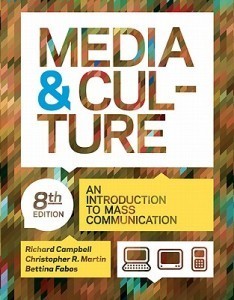 I’m perfectly happy for you to dive now to the comments section to tell me off, simply for having raised the topic.
I’m perfectly happy for you to dive now to the comments section to tell me off, simply for having raised the topic.
I might as well have just yelled “pull!” on a skeet shoot. The next sound you’ll hear is the guns going off and clay pigeons exploding.
It may help if I offer you a graphic provided by Jane Friedman, the former Writer’s Digest publisher who now is VQR’s digital editor and host of Writing on the Ether.
In teaching university media studies courses, Friedman has found it useful to include this diagram from the textbook Media & Culture: An Introduction to Mass Communication by Richard Campbell, Christopher R. Martin, and Bettina Fabos.
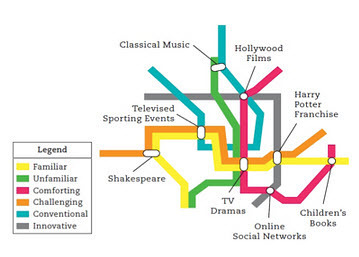
From Media & Culture
The intent of this diagrammatic representation of various influences in culture is to flatten them onto one plane, so entertainment-oriented elements are no “lower” than elements that might be classified as classical, “serious” elements. This view categorizes cultural inputs as “familiar,” “unfamiliar,” “comforting,” “challenging,” “conventional,” and “innovative.” It has some useful points of connection for those who normally chafe at suggestions that one cultural influence is more valuable or “higher” than another.
And if you want to hold your fire, however, I’ll tell you a bit more of what I mean and why I bring it up.
By “serious,” I mean material intended to help us explore meaningful, life-defining elements of our experience. Most of the time, I prefer serious work in all forms, from television to film and books and music, visual art, dance, the works.
By “entertainment,” I mean material the primary purpose and intent of which is to create a feel-good experience—perhaps through humor, pathos, nostalgia, etc. It usually trades in populist values and idioms. One reality show begets five others.
So why wasn’t that introduction in Italian? #AAUP13
— Sheila Bounford (@SheilaB01) June 22, 2013
There was a useful phrase used for many years around Broadway theater. A musical comedy was said to be “for the tired businessman.” And it was entertainment.
This was an age in which tired businesswomen were woefully overlooked, I’m afraid. Hence the gender reference. But the understanding was that the tired business person was the primary audience for long lines of beautiful women wearing fishnet hose and singing “We’re in the Money’ while kicking their right legs in perfect unison. And the crowd loved it.
Next door, a usually smaller Broadway house might have a production of Medea. The people attending that one, provided it was Eurpides’ doing of the story, saw the titular character kill her own children as an act of vengeance against her feckless husband Jason. The tired business person, it was assumed, would either be asleep by the time the kids were tossed over the parapet, or, if awake, would want to be next door watching women kicking their right legs instead.
Just some random life advice: if you’re going mattress shopping, wear pants or a long skirt.
— Ginger Clark (@Ginger_Clark) June 24, 2013
Over time, let’s say since the middle of the last century, there has been a trend in all forms, not just theater, toward more entertainment, less serious work. Many exceptions everywhere, of course. But in time, and in virtually all media, the drift toward more entertainment-oriented work has been bolstered by the digital dynamic.
As I’ve written many times, digital is about distribution. Its energy seeks the widest distribution possible, through new-media technology. And this is one reason why entertainment offerings usually find bigger audiences than serious-art offerings: there’s a wider audience for the distribution of entertainment.
OH MY GOD SO MANY FUCKING MATTRESS OPTIONS SO LITTLE TIME MAYBE I CAN JUST BRING MY HOTEL BED BACK FROM ALA? — Ginger Clark (@Ginger_Clark) June 27, 2013
A couple of decades ago, a parallel turning point arrived for criticism. Those of us who were working in news media as critics were asked to start using star ratings, thumbs up or down, cartoons of little people jumping up and down or sulking, whatever—graphic representations of the gist of critical reviews.
This was the digital dynamic arriving in criticism. Just as art and entertainment were starting to grow farther apart, real criticism and “reviewing” began to divide.
“Reviewing” became heavily consumer-oriented. How many thumbs up?
Why so few women in the LRB? Perhaps time for a women-only critics forum? Women seem to read/produce most books http://t.co/L82VGVqx0N
— Jonny Geller (@JonnyGeller) June 25, 2013
Critics found, of course, that many readers stopped reading their reviews. They just counted the thumbs “way up,” the stars, etc. Reviewers were asked to tell their readers to “go” or “don’t go” to a film or concert, to “read” or “don’t read” a book.
Actual criticism never seeks to tell users what to do. Instead it takes the work at hand and analyzes it in terms of what its creator(s) intended to do. What did this author mean to achieve? Did he or she achieve it?—how? how not? how well?.  As Bethanne Patrick writes, emphasis mine:
As Bethanne Patrick writes, emphasis mine:
Showing that books can contain good and bad but still be worth reading is just one of the ways in which critics benefit the reading public, and they also help readers place books in context. Is this book the next Holy Bible? The next Great American Novel? A blockbuster thriller? Yes, no, maybe? And why? What makes it so?
The user of criticism is then left to decide whether the analysis makes the work worth looking into. And he or she then decides whether the work is “good” or otherwise. Criticism asks you to think for yourself, not be told to “read this” or “don’t read that.” Of course, this is why some people don’t care for it. They like others to do the thinking and tell them what to do.
I mean, MEN do it ALL THE TIME. You guys. Jesus fuck. Literary criticism. My GOD.
— Jennifer Hodgson (@jenniferhodgson) June 24, 2013
Much as our culture neglected to nail the distinction between a “cinema” and a “theater”—and thus we talk of going to a “theater” to see a film—we didn’t do a very good job of distinguishing criticism from consumer reviewing.
In the same way that some authors rankle when told they’re working in entertainment while another set of authors is closer to art, there are consumer reviewers who don’t care for a clear understanding of what they do and how it differs from what true critics do.
I believe that what Patrick is writing about in her piece, “Why Literary Criticism Still Matters,” helps us acknowledge a more recent and different divide opening up at our feet: criticism/reviewing vs. recommendation.
@ChookzN Ever heard of literary criticism? Or did you think the literary canon fell from heaven without critical commentary? @brittlepaper
— Molara Wood (@molarawood) June 24, 2013
Patrick seems to pull critics and consumer reviewers closer together: they’re both surrounded, after all, by the recommendation culture. I think the functions of critics and reviewers remain different. I do think that she has an important point to make about the recommendation culture: It is unrelievedly biased toward the happy, the upbeat, the enthusiastic.
And it seems to be forming a third energy. As usual, we’ve eschewed giving this the clear terminology we need. We’re calling people of the recommendation culture “reviewers,” too.
If the tired business person provided his or her opinion of Medea’s Greek chorus or the sequins on the synchronized legs’ shoes, would we name those tired business people “reviewers?” Probably. We’re like that. We wouldn’t want the tired business people to feel they were any less deserving of a career title than someone who’d actually made a career of it—even though they were less deserving, of course. And we’d never think of going the opposite direction and calling critics business people.
Just saw today’s Wimbledon results. What the heck is going on over there?
— Don Linn (@DonLinn) June 26, 2013
So now we have three things, all called “reviewers.” They are:
(a) literary critics;
(b) consumer reviewers; and
(c) recommend-ers, the customer-appraisers.
Patrick writes:
If we don’t have reviews that tell us the truth—alongside recommendations that provide enthusiasm—then we have less information about how to spend our wild and precious reading lives. You can’t read every book, but even the small bits you read about as many books as possible increase your worldview.
What she’s describing—aside from “our wild and precious reading lives,” which I love—is the fulfillment of yet another old line from “legitimate” criticism: “Everybody’s a critic.”
Literary Criticism is gossiping about people who don’t exist. #generalizations
— Andrew Summitt (@KarmaKaiser) June 24, 2013
Thanks to that Internet “democracy,” everybody can (and on many days, it seems, does) weigh in with his or her opinion. About everything. Everything. The usefulness of the customer recommend-er is perfectly clear.
The patron who has tried the vacuum cleaner and gives it some stars and adds comments that only another vacuum cleaner shopper could love is performing a community and retail service. There is a genuine place and purpose for the customer’s appraisal, the recommendation culture at work, no question. 
Many see hope in the Amazonian acquisition of Goodreads because the problems Amazon has had with falsified customer reviews in the past may be, to some degree, ameliorated if Goodreads-vetted reviews from that avid community of 18 million recommending people are surfaced onto Amazon sales pages (with each member’s permission, of course).
Customer appraisal is all but required for decent online sales. It has a place and purpose. Nothing except sock puppetry need be held against it as a cautionary concern. It’s also about as far from actual literary criticism as my frolics around a badminton net are from what those fist-pumping tennis pros do at Wimbledon.
Literary criticism from a 10-year-old girl: “This book gives me more information about penguins than I care to have.” http://t.co/82QSftR43U
— Giselle Childs (@gisellechilds) June 24, 2013
Why Ask Why?
So, to review, we seem to have managed to divide all this galling opinion-slinging into three parts:
(a) literary criticism;
(b) consumer reviewing; and
(c) recommendation, customer-appraisal.
That being the case, one of the most disturbing issues Patrick’s piece raises is found in this question:
Where does book reviewing end and book marketing begin—and does this question even still matter to the business of publishing?
Most people are amazing. The few exceptions… yeah.
— Chris Guillebeau (@chrisguillebeau) June 25, 2013
For her, this is the fundamental issue, and it’s a good one. What is one form of reviewing or another, and what is merely salesmanship?
For me, however, the real question in her addendum is this: does this question still matter to the business of publishing?
If anybody’s putting together a list of Worst Moments in the Digital Disruption, I’d vote for the long, slow realization for journalists that diluted and starred reviews were just fine with the public, along with glitzy, hairsprayed “Live-Action Eyewitness (as opposed to Earwitness?) News You Can Use.” The dumbing down of current affairs.
Oh dammit, I stopped believing all the things again.
— Andrew Summitt (@KarmaKaiser) June 25, 2013
Many of us in the news media once believed that the population supported fair reporting and in-depth investigation. So, as our corporate executives reconfigured our newsrooms to respond to the Live-Action Nosewitness commercial interests of advertisers, we watched the windows, waiting for the pitchforks. Many of us felt sure the users would soon rise up, toss the hairspray over the parapet after Medea’s brats, and liberate us to return to journalism’s traditional separations of editorial and advertising. With this rescue, we felt sure, would come a restoration of rigorous literary criticism.
The cavalry never came over the hill.
Someone on tumblr said Jennifer Lawrence is “rounded out.” How do I jettison them directly into space, where there is no oxygen?
— Dan Krokos (@DanKrokos) June 25, 2013
We learned, in fact, that the wider public, for the most part, were not concerned about the principles of genuine journalistic performance. There’s a good chance, we know now, that they never even understood the concept of a truly free press.
And as digital news-you-can-use shallowed out into chit-chatty info-tainment, we had to concede that the public, in fact, doesn’t care. Info-tainment is “good enough.” Just make a fist and shake it bit, and that’s “good enough” as a faint reflection of what once was a fight.
Literary criticism quote of the day: ‘The body can be used to stimulate laughter…Prince Charles’ ears are proof enough of that’
— Alice Hardman (@AliceHardman) June 22, 2013
In book publishing, what Patrick is asking gets at the worrisome center of the same issue: do readers today care whether they have access to criticism? Or even to consumer reviews? Or is the recommendation culture “good enough?” She writes:
In a world of recommendations only, we don’t have to worry about conflicts of interest. Books are not pharmaceuticals or food; we don’t need a federal agency to vouch for their contents or effects…No one is going to get hurt if a book recommendation is based solely on the recommender’s love for the author.
She’s saying, then, that fair play and the disinterested stance once prized and protected by critics, their editors, and, surely, a handful of discerning readers, no longer are a concern.

Jacob Silverman
In his earlier VQR piece, The Art of the Negative Review, Jacob Silverman wrote that self-assigning critics are automatically likely to produce positive criticism because they’re choosing works they feel are valuable to bring to their readers’ attention. He includes, for example, Time magazine’s Lev Grossman, writing:
Grossman pointed out that he is the books desk at Time magazine—no one else writes or edits books coverage there—so he feels a sort of obligation to champion good literature and chooses his review subjects accordingly.
And regardless of how reviews might be assigned, the best news is that in some cases, real criticism, of course, still is published at all.

Emily St. John Mandel
I’m always glad to recommend the work of Emily St. John Mandel at The Millions, not only because her voice as a critic is so amply informed by her experience as an author, herself, but also because the character of her review work is distinctive—given to the work at hand, yet set within the context of a thoughtful point of view.
Update on Friday, June 28: The Millions has just posted Mandel’s latest criticism and you couldn’t ask for a better example of what I’m describing here.
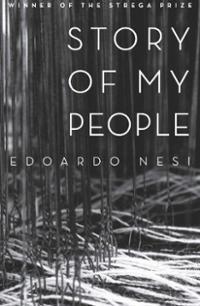 In The Bulldozing Powers of Cheap, she is critiquing Edouardo Nesi’s highly regarded Story of My People. Mandel describes the book as “a microcosm for the decline of the Italian textiles industry and, more broadly, for the decline of manufacturing in the first world as industry has turned to cheaper labor markets elsewhere.”
In The Bulldozing Powers of Cheap, she is critiquing Edouardo Nesi’s highly regarded Story of My People. Mandel describes the book as “a microcosm for the decline of the Italian textiles industry and, more broadly, for the decline of manufacturing in the first world as industry has turned to cheaper labor markets elsewhere.”
Watch how seamlessly (sorry), Mandel crosses into and out of Nesi’s material, using her own experiences in apparel manufacturing and retail and drawing Elizabeth L. Cline’s Over-Dressed: The Shockingly High Cost of Cheap Fashion into her essay, on “the changing nature of fashion, itself.”
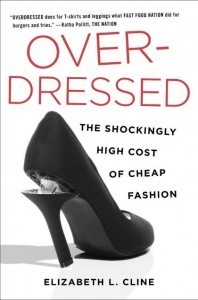 Coincidentally, Publishing Perspectives Editor-in-Chief Edward Nawotka has just recommended Story of My People to me.
Coincidentally, Publishing Perspectives Editor-in-Chief Edward Nawotka has just recommended Story of My People to me.
So not only are we talking about a work getting a lot of strong attention, but also some fine critical evocation, as we read here from Mandel:
Where Story of My People succeeds most brilliantly is as a vision of what a creative and ethical model of capitalism can look like. Nesi describes moments of exhilarating creativity: gathering with colleagues in the factory after hours, the conversation turning to the fabrics worn by Hemingway and Fitzgerald, Nesi rushing to bring the books out of his office, designers peering excitedly at the clothes worn in author photos, a week later those same fabrics lying before them on the table. In the years before he sold the company, Nesi lived something of a double life. He was a manufacturer who wrote novels, and it shows in his prose.
And here is where I’ll disagree, respectfully, with Bethanne Patrick. When, in her first line, she writes of “objective literary criticism,” she’s naming a unicorn.
 No journalist is objective, least of all the critic, whose job it is to form and promulgate an opinion. I’m guessing Patrick means fair. Experienced critics are adept at giving work a full hearing, at starting from what the author intends and evaluating the results on the terms of the attempt. They’re never objective. They’re trained, however, to be fair. You can see this at work in the critical writings of Mandel, too.
No journalist is objective, least of all the critic, whose job it is to form and promulgate an opinion. I’m guessing Patrick means fair. Experienced critics are adept at giving work a full hearing, at starting from what the author intends and evaluating the results on the terms of the attempt. They’re never objective. They’re trained, however, to be fair. You can see this at work in the critical writings of Mandel, too.

Kyle Minor
Or see Kyle Minor’s criticism of the critics, Today in silly book reviews: Let’s all fight about Alice Munro at Salon. In that piece, bisected as it is by a Drugstore.com ad, Minor writes:
The critic of the sainting sort might shower the writer with unqualified praise, declare her a genius, and ignore or explain away the writer’s shortcomings — or declare them to be virtues. The other kind of critic might decide that the surest path to deflating the balloon of hyperbole isn’t merely letting a little air out the bottom. No, it might be more satisfying — and attention-grabbing — to spray it with a flamethrower.
 This is critic-on-critic action, rhinos clashing on the veld, the sweaty and purposeful shaking of a ranking fist at another. In fact, Minor gets in some jabs at just about all of us. For example:
This is critic-on-critic action, rhinos clashing on the veld, the sweaty and purposeful shaking of a ranking fist at another. In fact, Minor gets in some jabs at just about all of us. For example:
Martin Amis, in a New Yorker review of a story collection by Don DeLillo, said: “When we say that we love a writer’s work, we are always stretching the truth: what we really mean is that we love about half of it. Sometimes rather more than half, sometimes rather less.”
By the time you finish Minor, Wimbledon will be over. (The Salon piece is longer even than an Ether post, I’m pleased to tell you.)
But you’ll know more than you did when you started, about literary criticism, its zip-line way of sailing down one theme and back up another, its pile-ups of preferred phrasings, an art performed on an art. You’ll know a bit more about what we’re losing, about what’s being given away in our shrugging acceptance of terms, like “reviewing,” applied to marketplace jargon and shopping-cart flattery.
The French cover for my second novel is very atmospheric. http://t.co/1Aa6fiLeMg
— Emily St. J. Mandel (@EmilyMandel) June 24, 2013
And most of all, you’ll know a bit more about the lack of consciousness that characterizes so many changes in our culture on digital drive-time.
We’re generally unaware of these cultural slips and slides on the grassy court of our progress—this value brought to its knees, that tradition flat on its ass, something important retired in early-round competition. It doesn’t matter, get out of the way. We’re mobile. We’re social. We’re subscribing. And we’re trying to get a few more “likes” onto the page before somebody drops a one-star in the locker room and runs.
“Are bloggers killing literary criticism?” Just one of the 10 bookish conversations we never want to have again: http://t.co/Sq4zMVIt
— Book Riot (@BookRiot) January 3, 2013
If you asked one of these tennis champions I like so much? He might not even remember. “Shake my fist? I did? Come on. Show me the tape.”
One of the things literary criticism does—hell, consumer reviewing might even manage from time to time—is make us aware of a trend, a surprise, a turn taken, a discovery made.
But mostly, we just shake a little recommendation at it.
What do you think? Is that really good enough?
Could I write a literary criticism of my own novel, #AnOrdinaryBoy? There is a lot I want to say. http://t.co/tRDXkJV7aT
— Brian Centrone (@BrianCentrone) June 21, 2013
Main image: iStockphoto – BuddyM
The post WRITING ON THE ETHER: Let’s Review Criticism appeared first on Jane Friedman and was written by Porter Anderson.
WRITING ON THE ETHER: Let’s Review Criticism
Table of Contents
More Critics Than You Can Shake a Fist At
Art vs. Entertainment / Criticism vs. Reviewing
Why Ask Why?
More Critics Than You Can Shake a Fist At
Do you follow tennis? Observe the shaking of the fist.
Most of the world-class athletes at the All-England Club right now (including those being sent home alarmingly early) are not fistfight folks. But have a look: fist pumps.
In almost any Wimbledon match, male or female, you’ll find the players shaking their fists, normally after winning points. As if at any moment, they might deck their opponents or punch out the ball kids.

This compilation of shots is from ESPN’s Facebook page, June 26, 2013. Fist-pumping indicators added.
Nobody follows these athletes more happily than I do. But that pumping of the fist looks showy at best on these immaculate, gifted, hard-working, smart people. It’s largely a ritual, a mannered iteration of a once-genuine gesture. It’s what you do with the hand not holding the racket. On one, it looks more like he’s shaking dice. On another, it looks like she’s grabbing fireflies. And, hey, it looks no better on the fans in the stands, these lovely, mild-mannered, bespectacled, brolly-toting rain dodgers…fist pumping?
It’s a cultural affectation. The shaking of the fist.
Could that be what’s become of literary criticism, too?
A significant disadvantage of the world of book recommendation is that we never hear about books that don’t live up to their promise. The bad books. Yes, I’ve heard the “We don’t have time for bad books” argument, and while that works for recommending titles to genteel associations, it stinks when it comes to creating and maintaining a lively culture.

Bethanne Patrick
In Why Literary Criticism Still Matters at Virginia Quarterly Review, Bethanne Patrick begins asking some important questions to which we’re paying too little attention these days.
Think of literary criticism as a round robin of matches being played on the outer courts of the big tournament. The industry! the industry! is fixated on its Centre Court melodrama. While we watch traditional major players slip and slide, fall on their grass and suffer mortifying injuries, we aren’t focused on what’s happening to literary criticism.
Patrick’s good questions lie under the header “Internet democratization.” Many good things have accrued from the digital dynamic. But the recommendation culture, in and of itself, may not be one of them, not entirely, if it’s allowed to replace real criticism.
Patrick, a critic, herself (as am I), writes:
This isn’t necessarily a problem for publishers. Publishing is a business, not an arts collective. This is a problem for authors and readers. If we want to have a balanced and literate literary culture, we have to be ready to name good books and bad books—and even to name the good and the bad within a single book, which is what the best book critics do on a regular basis.
Let’s look at a couple of changes that you and many others might have noticed only in sidelong glances on our way to the larger, central debates of the disruption.

One of VQR’s “instapoem” collection being curated by Robert Lee Brewer
Art vs. Entertainment / Criticism vs. Reviewing
It’s not uncommon for some readers to be adamantly put out with me when I bring up entertainment as distinct from what I call more “serious” work.
I’m perfectly happy for you to dive now to the comments section to tell me off, simply for having raised the topic. I might as well have just yelled “pull!” on a skeet shoot. The next sound you’ll hear is the guns going off and clay pigeons exploding.
It may help if I offer you a graphic provided by Jane Friedman, the former Writer’s Digest publisher who now is VQR’s digital editor and host of Writing on the Ether. In teaching university media studies courses, Friedman has found it useful to include this diagram from the textbook Media & Culture: An Introduction to Mass Communication by Richard Campbell, Christopher R. Martin, and Bettina Fabos.

From Media & Culture
The intent of this diagrammatic representation of various influences in culture is to flatten them onto one plane, so entertainment-oriented elements are no “lower” than elements that might be classified as classical, “serious” elements. This view categorizes cultural inputs as “familiar,” “unfamiliar,” “comforting,” “challenging,” “conventional,” and “innovative.” It has some useful points of connection for those who normally chafe at suggestions that one cultural influence is more valuable or “higher” than another.
And if you want to hold your fire, however, I’ll tell you a bit more of what I mean and why I bring it up.
By “serious,” I mean material intended to help us explore meaningful, life-defining elements of our experience. Most of the time, I prefer serious work in all forms, from television to film and books and music, visual art, dance, the works.
By “entertainment,” I mean material the primary purpose and intent of which is to create a feel-good experience—perhaps through humor, pathos, nostalgia, etc. It usually trades in populist values and idioms. One reality show begets five others.
So why wasn’t that introduction in Italian? #AAUP13
— Sheila Bounford (@SheilaB01) June 22, 2013
There was a useful phrase used for many years around Broadway theater. A musical comedy was said to be “for the tired businessman.” And it was entertainment.
This was an age in which tired businesswomen were woefully overlooked, I’m afraid. Hence the gender reference. But the understanding was that the tired business person was the primary audience for long lines of beautiful women wearing fishnet hose and singing “We’re in the Money’ while kicking their right legs in perfect unison. And the crowd loved it.
Next door, a usually smaller Broadway house might have a production of Medea. The people attending that one, provided it was Eurpides’ doing of the story, saw the titular character kill her own children as an act of vengeance against her feckless husband Jason. The tired business person, it was assumed, would either be asleep by the time the kids were tossed over the parapet, or, if awake, would want to be next door watching women kicking their right legs instead.
Just some random life advice: if you’re going mattress shopping, wear pants or a long skirt.
— Ginger Clark (@Ginger_Clark) June 24, 2013
Over time, let’s say since the middle of the last century, there has been a trend in all forms, not just theater, toward more entertainment, less serious work. Many exceptions everywhere, of course. But in time, and in virtually all media, the drift toward more entertainment-oriented work has been bolstered by the digital dynamic.
As I’ve written many times, digital is about distribution. Its energy seeks the widest distribution possible, through new-media technology. And this is one reason why entertainment offerings usually find bigger audiences than serious-art offerings: there’s a wider audience for the distribution of entertainment.
OH MY GOD SO MANY FUCKING MATTRESS OPTIONS SO LITTLE TIME MAYBE I CAN JUST BRING MY HOTEL BED BACK FROM ALA? — Ginger Clark (@Ginger_Clark) June 27, 2013
A couple of decades ago, a parallel turning point arrived for criticism. Those of us who were working in news media as critics were asked to start using star ratings, thumbs up or down, cartoons of little people jumping up and down or sulking, whatever—graphic representations of the gist of critical reviews.
This was the digital dynamic arriving in criticism. Just as art and entertainment were starting to grow farther apart, real criticism and “reviewing” began to divide.
“Reviewing” became heavily consumer-oriented. How many thumbs up?
Why so few women in the LRB? Perhaps time for a women-only critics forum? Women seem to read/produce most books http://t.co/L82VGVqx0N
— Jonny Geller (@JonnyGeller) June 25, 2013
Critics found, of course, that many readers stopped reading their reviews. They just counted the thumbs “way up,” the stars, etc. Reviewers were asked to tell their readers to “go” or “don’t go” to a film or concert, to “read” or “don’t read” a book.
Actual criticism never seeks to tell users what to do. Instead it takes the work at hand and analyzes it in terms of what its creator(s) intended to do. What did this author mean to achieve? Did he or she achieve it?—how? how not? how well?.  As Bethanne Patrick writes, emphasis mine:
As Bethanne Patrick writes, emphasis mine:
Showing that books can contain good and bad but still be worth reading is just one of the ways in which critics benefit the reading public, and they also help readers place books in context. Is this book the next Holy Bible? The next Great American Novel? A blockbuster thriller? Yes, no, maybe? And why? What makes it so?
The user of criticism is then left to decide whether the analysis makes the work worth looking into. And he or she then decides whether the work is “good” or otherwise. Criticism asks you to think for yourself, not be told to “read this” or “don’t read that.” Of course, this is why some people don’t care for it. They like others to do the thinking and tell them what to do.
I mean, MEN do it ALL THE TIME. You guys. Jesus fuck. Literary criticism. My GOD.
— Jennifer Hodgson (@jenniferhodgson) June 24, 2013
Much as our culture neglected to nail the distinction between a “cinema” and a “theater”—and thus we talk of going to a “theater” to see a film—we didn’t do a very good job of distinguishing criticism from consumer reviewing.
In the same way that some authors rankle when told they’re working in entertainment while another set of authors is closer to art, there are consumer reviewers who don’t care for a clear understanding of what they do and how it differs from what true critics do.
I believe that what Patrick is writing about in her piece, “Why Literary Criticism Still Matters,” helps us acknowledge a more recent and different divide opening up at our feet: criticism/reviewing vs. recommendation.
@ChookzN Ever heard of literary criticism? Or did you think the literary canon fell from heaven without critical commentary? @brittlepaper
— Molara Wood (@molarawood) June 24, 2013
Patrick seems to pull critics and consumer reviewers closer together: they’re both surrounded, after all, by the recommendation culture. I think the functions of critics and reviewers remain different. I do think that she has an important point to make about the recommendation culture: It is unrelievedly biased toward the happy, the upbeat, the enthusiastic.
And it seems to be forming a third energy. As usual, we’ve eschewed giving this the clear terminology we need. We’re calling people of the recommendation culture “reviewers,” too.
If the tired business person provided his or her opinion of Medea’s Greek chorus or the sequins on the synchronized legs’ shoes, would we name those tired business people “reviewers?” Probably. We’re like that. We wouldn’t want the tired business people to feel they were any less deserving of a career title than someone who’d actually made a career of it—even though they were less deserving, of course. And we’d never think of going the opposite direction and calling critics business people.
Just saw today’s Wimbledon results. What the heck is going on over there?
— Don Linn (@DonLinn) June 26, 2013
So now we have three things, all called “reviewers.” They are:
(a) literary critics;
(b) consumer reviewers; and
(c) recommend-ers, the customer-appraisers.
Patrick writes:
If we don’t have reviews that tell us the truth—alongside recommendations that provide enthusiasm—then we have less information about how to spend our wild and precious reading lives. You can’t read every book, but even the small bits you read about as many books as possible increase your worldview.
What she’s describing—aside from “our wild and precious reading lives,” which I love—is the fulfillment of yet another old line from “legitimate” criticism: “Everybody’s a critic.”
Literary Criticism is gossiping about people who don’t exist. #generalizations
— Andrew Summitt (@KarmaKaiser) June 24, 2013
Thanks to that Internet “democracy,” everybody can (and on many days, it seems, does) weigh in with his or her opinion. About everything. Everything. The usefulness of the customer recommend-er is perfectly clear.
The patron who has tried the vacuum cleaner and gives it some stars and adds comments that only another vacuum cleaner shopper could love is performing a community and retail service. There is a genuine place and purpose for the customer’s appraisal, the recommendation culture at work, no question. 
Many see hope in the Amazonian acquisition of Goodreads because the problems Amazon has had with falsified customer reviews in the past may be, to some degree, ameliorated if Goodreads-vetted reviews from that avid community of 18 million recommending people are surfaced onto Amazon sales pages (with each member’s permission, of course).
Customer appraisal is all but required for decent online sales. It has a place and purpose. Nothing except sock puppetry need be held against it as a cautionary concern. It’s also about as far from actual literary criticism as my frolics around a badminton net are from what those fist-pumping tennis pros do at Wimbledon.
Literary criticism from a 10-year-old girl: “This book gives me more information about penguins than I care to have.” http://t.co/82QSftR43U
— Giselle Childs (@gisellechilds) June 24, 2013
Why Ask Why?
So, to review, we seem to have managed to divide all this galling opinion-slinging into three parts:
(a) literary criticism;
(b) consumer reviewing; and
(c) recommendation, customer-appraisal.
That being the case, one of the most disturbing issues Patrick’s piece raises is found in this question:
Where does book reviewing end and book marketing begin—and does this question even still matter to the business of publishing?
Most people are amazing. The few exceptions… yeah.
— Chris Guillebeau (@chrisguillebeau) June 25, 2013
For her, this is the fundamental issue, and it’s a good one. What is one form of reviewing or another, and what is merely salesmanship?
For me, however, the real question in her addendum is this: does this question still matter to the business of publishing?
If anybody’s putting together a list of Worst Moments in the Digital Disruption, I’d vote for the long, slow realization for journalists that diluted and starred reviews were just fine with the public, along with glitzy, hairsprayed “Live-Action Eyewitness (as opposed to Earwitness?) News You Can Use.” The dumbing down of current affairs.
Oh dammit, I stopped believing all the things again.
— Andrew Summitt (@KarmaKaiser) June 25, 2013
Many of us in the news media once believed that the population supported fair reporting and in-depth investigation. So, as our corporate executives reconfigured our newsrooms to respond to the Live-Action Nosewitness commercial interests of advertisers, we watched the windows, waiting for the pitchforks. Many of us felt sure the users would soon rise up, toss the hairspray over the parapet after Medea’s brats, and liberate us to return to journalism’s traditional separations of editorial and advertising. With this rescue, we felt sure, would come a restoration of rigorous literary criticism.
The cavalry never came over the hill.
Someone on tumblr said Jennifer Lawrence is “rounded out.” How do I jettison them directly into space, where there is no oxygen?
— Dan Krokos (@DanKrokos) June 25, 2013
We learned, in fact, that the wider public, for the most part, were not concerned about the principles of genuine journalistic performance. There’s a good chance, we know now, that they never even understood the concept of a truly free press.
And as digital news-you-can-use shallowed out into chit-chatty info-tainment, we had to concede that the public, in fact, doesn’t care. Info-tainment is “good enough.” Just make a fist and shake it bit, and that’s “good enough” as a faint reflection of what once was a fight.
Literary criticism quote of the day: ‘The body can be used to stimulate laughter…Prince Charles’ ears are proof enough of that’
— Alice Hardman (@AliceHardman) June 22, 2013
In book publishing, what Patrick is asking gets at the worrisome center of the same issue: do readers today care whether they have access to criticism? Or even to consumer reviews? Or is the recommendation culture “good enough?” She writes:
In a world of recommendations only, we don’t have to worry about conflicts of interest. Books are not pharmaceuticals or food; we don’t need a federal agency to vouch for their contents or effects…No one is going to get hurt if a book recommendation is based solely on the recommender’s love for the author.
She’s saying, then, that fair play and the disinterested stance once prized and protected by critics, their editors, and, surely, a handful of discerning readers, no longer are a concern.

Jacob Silverman
In his earlier VQR piece, The Art of the Negative Review, Jacob Silverman wrote that self-assigning critics are automatically likely to produce positive criticism because they’re choosing works they feel are valuable to bring to their readers’ attention. He includes, for example, Time magazine’s Lev Grossman, writing:
Grossman pointed out that he is the books desk at Time magazine—no one else writes or edits books coverage there—so he feels a sort of obligation to champion good literature and chooses his review subjects accordingly.
And regardless of how reviews might be assigned, the best news is that in some cases, real criticism, of course, still is published at all.

Emily St. John Mandel
I’m always glad to recommend the work of Emily St. John Mandel at The Millions, not only because her voice as a critic is so amply informed by her experience as an author, herself, but also because the character of her review work is distinctive—given to the work at hand, yet set within the context of a thoughtful point of view.
And here is where I’ll disagree, respectfully, with Bethanne Patrick. When, in her first line, she writes of “objective literary criticism,” she’s naming a unicorn.
 No journalist is objective, least of all the critic, whose job it is to form and promulgate an opinion. I’m guessing Patrick means fair. Experienced critics are adept at giving work a full hearing, at starting from what the author intends and evaluating the results on the terms of the attempt. They’re never objective. They’re trained, however, to be fair. You can see this at work in the critical writings of Mandel, too.
No journalist is objective, least of all the critic, whose job it is to form and promulgate an opinion. I’m guessing Patrick means fair. Experienced critics are adept at giving work a full hearing, at starting from what the author intends and evaluating the results on the terms of the attempt. They’re never objective. They’re trained, however, to be fair. You can see this at work in the critical writings of Mandel, too.

Kyle Minor
Or see Kyle Minor’s criticism of the critics, Today in silly book reviews: Let’s all fight about Alice Munro at Salon. In that piece, bisected as it is by a Drugstore.com ad, Minor writes:
The critic of the sainting sort might shower the writer with unqualified praise, declare her a genius, and ignore or explain away the writer’s shortcomings — or declare them to be virtues. The other kind of critic might decide that the surest path to deflating the balloon of hyperbole isn’t merely letting a little air out the bottom. No, it might be more satisfying — and attention-grabbing — to spray it with a flamethrower.
 This is critic-on-critic action, rhinos clashing on the veld, the sweaty and purposeful shaking of a ranking fist at another. In fact, Minor gets in some jabs at just about all of us. For example:
This is critic-on-critic action, rhinos clashing on the veld, the sweaty and purposeful shaking of a ranking fist at another. In fact, Minor gets in some jabs at just about all of us. For example:
Martin Amis, in a New Yorker review of a story collection by Don DeLillo, said: “When we say that we love a writer’s work, we are always stretching the truth: what we really mean is that we love about half of it. Sometimes rather more than half, sometimes rather less.”
By the time you finish Minor, Wimbledon will be over. (The Salon piece is longer even than an Ether post, I’m pleased to tell you.)
But you’ll know more than you did when you started, about literary criticism, its zip-line way of sailing down one theme and back up another, its pile-ups of preferred phrasings, an art performed on an art. You’ll know a bit more about what we’re losing, about what’s being given away in our shrugging acceptance of terms, like “reviewing,” applied to marketplace jargon and shopping-cart flattery.
The French cover for my second novel is very atmospheric. http://t.co/1Aa6fiLeMg
— Emily St. J. Mandel (@EmilyMandel) June 24, 2013
And most of all, you’ll know a bit more about the lack of consciousness that characterizes so many changes in our culture on digital drive-time.
We’re generally unaware of these cultural slips and slides on the grassy court of our progress—this value brought to its knees, that tradition flat on its ass, something important retired in early-round competition. It doesn’t matter, get out of the way. We’re mobile. We’re social. We’re subscribing. And we’re trying to get a few more “likes” onto the page before somebody drops a one-star in the locker room and runs.
“Are bloggers killing literary criticism?” Just one of the 10 bookish conversations we never want to have again: http://t.co/Sq4zMVIt
— Book Riot (@BookRiot) January 3, 2013
If you asked one of these tennis champions I like so much? He might not even remember. “Shake my fist? I did? Come on. Show me the tape.”
One of the things literary criticism does—hell, consumer reviewing might even manage from time to time—is make us aware of a trend, a surprise, a turn taken, a discovery made.
But mostly, we just shake a little recommendation at it.
What do you think? Is that really good enough?
Could I write a literary criticism of my own novel, #AnOrdinaryBoy? There is a lot I want to say. http://t.co/tRDXkJV7aT
— Brian Centrone (@BrianCentrone) June 21, 2013
Main image: iStockphoto – BuddyM
The post WRITING ON THE ETHER: Let’s Review Criticism appeared first on Jane Friedman.
June 20, 2013
WRITING ON THE ETHER: While You Were Bashing Amazon by Porter Anderson
Table of Contents
Seattle Hands $110,000 to Five Authors
Dr. Walniuk Is in the House
The “Devil” Is in the Details
Seattle Hands $110,000 to Five Authors
My feet have started to touch the ground again. I was pretty floaty there for a while.
Sitting down?.

Rysa Walker
She got a publishing contract and a $50,000 advance for her debut YA self-published novel.
The novel for which author Rysa Walker has just received that advance started life as the self-published Time’s Twisted Arrow.
When Amazon Publishing releases it on October 22, it will be titled Timebound.
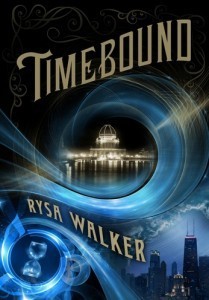 And will have been re-edited and prepared with its new cover as a fully vested catalog offering from the Skyscape imprint, part of Amazon Children’s Publishing.
And will have been re-edited and prepared with its new cover as a fully vested catalog offering from the Skyscape imprint, part of Amazon Children’s Publishing.
And it’s her first.
As long as you’re sitting there weeping, I’ll just mention Walker’s four co-finalists in the Amazon Breakthrough Novel Award competition. Why let those Kleenexes go to waste?
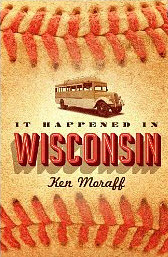 These four authors now are first prize winners. They each have been given a contract with a $15,000 advance. They are:
These four authors now are first prize winners. They each have been given a contract with a $15,000 advance. They are:
Ken Moraff in Ithaca, New York, whose winning book is It Happened in Wisconsin, is the general fiction category winner, about a Depression-era baseball team and the dynamics of its players relationships.
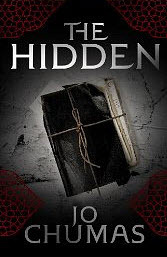 Jo Chumas, a journalist in Barcelona. Her book, The Hidden, is the winner in the mystery and thriller category. Set in the Egyptian Sinai in the 1940s, it combines “brutal murder,” revolution and old diary writings.Chumas book will be published in October on the Thomas & Mercer imprint.
Jo Chumas, a journalist in Barcelona. Her book, The Hidden, is the winner in the mystery and thriller category. Set in the Egyptian Sinai in the 1940s, it combines “brutal murder,” revolution and old diary writings.Chumas book will be published in October on the Thomas & Mercer imprint.
(Book PR copy always says “brutally murdered.” No one is ever just murdered. They’re “brutally murdered.” Never “gently murdered,” “softly murdered,” “mildly murdered,” “thoughtfully murdered.” That’s because murder by any means is brutal. Just “murdered” is all you need. The “brutality” is hype.)
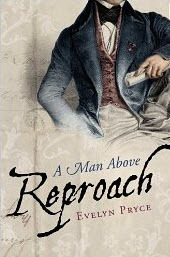 Evelyn Pryce, whose winning book, A Man Beyond Reproach, is also a debut effort. This one is the romance-category winner, set in 1830s London and a bordello that seems to cater to noblemen who might become Shirtless Men Kissing Beautiful Women. this one will be out in October on the Montlake Romance imprint.
Evelyn Pryce, whose winning book, A Man Beyond Reproach, is also a debut effort. This one is the romance-category winner, set in 1830s London and a bordello that seems to cater to noblemen who might become Shirtless Men Kissing Beautiful Women. this one will be out in October on the Montlake Romance imprint.
J. Lincoln Fenn “began her career in horror,” her bio says. This is true of so many of us, isn’t it?
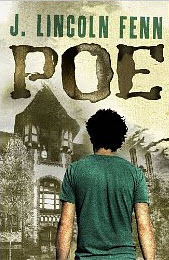 No, seriously, her book, Poe—winner in the sci-fi, fantasy, and horror category of the competition—is set on Halloween and features a Rasputin zombie-novelist who writes obits for a living. I hope it quotes a raven, too. With a title like Poe, this one simply has to come out on the 47North imprint.
No, seriously, her book, Poe—winner in the sci-fi, fantasy, and horror category of the competition—is set on Halloween and features a Rasputin zombie-novelist who writes obits for a living. I hope it quotes a raven, too. With a title like Poe, this one simply has to come out on the 47North imprint.
I’d be interested in hearing of other publishers in the industry! the industry! that have cultivated new fiction so richly and in such a readership-involving way as Amazon Publishing’s global voting stage that asks readers, themselves, to gauge the material.
And once you’ve pulled yourself together, we’re going to spend some time here with the grand-prize winner, Rysa Walker, whose experience and approach reflect the way Amazon’s program is not only producing work but also nurturing it.
For her part, Walker—that first name is pronounced “RYE-sa”—tells me in a phone interview from her home in Cary, North Carolina, “I’ve actually made a lot of friends in the indie community. I spent the last year trying to market what was then Time’s Twisted Arrow,” her winning manuscript which she’d published, herself.
I’ve lost my breakthrough notes for my MG novel. I would scream, but why alarm the pets?
— Sarah Herlong (@HerlongSarah) June 20, 2013
Self-publication wasn’t a requirement of the competition, nor was it a problem. The rules of the Breakthrough Novel Award program prohibit entering material that has been under a publishing contract currently or previously. But as long as the rights have never left the author, an entry is valid. The entry period is normally in mid- to late-January. Up to 10,000 people can make one entry each. The competition, and the voting on the winners, is international and goes through several stages of selection and elimination. Walker remembers her self-published effort not quite languishing but not taking off, either. “I got a lot of good reviews. I won’t even tell you it was selling okay. It was tolerable, a few sales a week. For an indie author, that being my first book, and knowing it was part of a series, that was hopeful.”
Working on my alt lit breakthrough novel
— Dr. Crop (@Dr_Cop) June 17, 2013
Now, of course, what will publish as Timebound in October looks much more than merely hopeful. And it’s the first in a three-volume series, Walker says.
I never thought I’d get past the point of the free Publishers Weekly review [at the semi-finalist stage]. That was really my goal. I was hoping not to have to pay for an indie review.
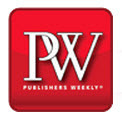 Walker makes a point familiar to many self-publishing authors: despite the fact that authors must pay their way into both Kirkus’ and Publishers Weekly’s programs for self-published writers, the resulting reviews will label the work as independent.
Walker makes a point familiar to many self-publishing authors: despite the fact that authors must pay their way into both Kirkus’ and Publishers Weekly’s programs for self-published writers, the resulting reviews will label the work as independent.
 Kirkus Indie offers a review at rates of $425 for a standard review and $575 for an express review.
Kirkus Indie offers a review at rates of $425 for a standard review and $575 for an express review.
Publishers Weekly offers the possibility of a review (PW makes the choice) with a PW Select registration for a listing at $149 for self-published books.
Walker:
I was reviewed at Kirkus, and it was a very positive review. But I had to pay for it and it was still “Kirkus Indie.” Some people look at that, and they dismiss it, even though you can pay that money and get a bad review. I know plenty of people who have done that. But people still see this as a “paid review” and therefore not valid.
The stigma [about self-publishing] is not gone yet. I read an article yesterday that ripped into indies, saying that 95 percent of what’s out there is bad and it’s degrading the publishing industry because people don’t know where to find a good book. And there is some truth to that, but I’ve read some pretty bad traditionally published books, too. Maybe not as many grammatical errors, but there are other issues, too.

Polly Courtney
In an interesting parallel, British author Polly Courtney’s new Q&A at the Guardian, ‘Now I’m back to self-publishing, I’ve regained control’, has some pointed comments about her experience in working on a contract with HarperCollins.
Her new, self-published book, Feral Youth—involving the 2011 London riots—is scheduled for an August 1 availability in the States.
When I signed with HarperCollins, I thought “Great! This is the golden ticket I’ve been waiting for!” I thought it would be a great collaboration between me and the publisher, given my success self-publishing my first two novels. The reality was a big disappointment. The publisher seemed intent on pushing my books into pre-existing moulds (“misery lit”, “chick lit”) that didn’t reflect the contents.
“Brand Polly Courtney” was increasingly muddled, leading to confusion for readers. It turned out that my editor hadn’t actually read my first two books. There was no marketing budget, which meant that it was up to me to promote each book. This wasn’t a problem per se, but my job was made hard by the frivolous book covers and titles assigned to them. I actually felt ashamed of the product. Now I’m back to self-publishing, I’ve regained control.
Had a great time last night at Amazon Breakthrough Novel awards dinner yucking it up with G.M. Ford, Vince Keenan… http://t.co/C5v2tZ5BKx
— Michael Sherer (@MysteryNovelist) June 16, 2013
If anything, Walker seems to be just as happily making the trip the other direction, from self-published writer to an Amazon Publishing (traditional) author. She’s impressed at the agility of the company, she says. By the time the Breakthrough competition’s five finalists were chosen, “they were in high gear,” she says, creating cover art, putting her book through its first developmental edit (which she liked), so that the quintet of winners will all publish in a smart time-frame, on October 22, “while the buzz is still there.” And it’s a moment of new buzz for Amazon Publishing, as well.

Oliver Pötzsch
As covered by Digital Book World’s Jeremy Greenfield at Forbes, the company has found a million-copy seller in the German author Oliver Pötzsch, translating the Hangman’s Daughter series on the AmazonCrossing imprint. In Amazon Publishing Has First Million-Copy Hit; Will Authors, Agents Take Notice? 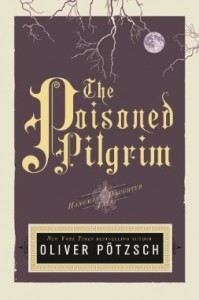 Greenfield writes:
Greenfield writes:
His Hangman’s Daughter series has sold over a million copies of three titles between print, ebook and audio-book sales…“One big question is how much of the sale came from Harcourt’s print edition?” said Mike Shatzkin, a publishing industry consultant and conference programmer for Digital Book World. “When there’s an Amazon-Harcourt partnership, the resistance should be much less.”
The Harcourt arrangement with Amazon places Amazon Publishing print editions in cooperating bookstores. Greenfield quotes Forrester’s James McQuivey, himself an Amazon Publishing author of Digital Disruption: Unleashing the Next Wave of Innovation:
I don’t think Barnes & Noble will be moved but indie bookstores might look to this and say, “We want to have the books that people want to read. You might want to take a moral stand but you might also want to sell books. So you could try putting some Amazon books in there and if they don’t sell, maybe you do a little victory dance and if they do sell, well, that’s money.
Meanwhile, there’s no shortage of victory dancing for the grand prize winner of Amazon Publishing’s Breakthrough Novel competition.
When we were judging the 50 Shades marketing campaign last week, they had reader testimonials.
— Sam Missingham (@samatlounge) June 20, 2013
My favourite was: ‘Can’t wait to read the next book. The old man’s away all week.’
— Sam Missingham (@samatlounge) June 20, 2013
Dr. Walniuk Is in the House
One of my goals in writing this series of YA books has been to get younger readers interested in real history.
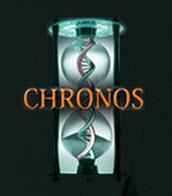 A longtime educator in history and government, Walker’s real name is Dr. Cheryl Walniuk. She teaches through the University of Maryland’s University College online program. Her CHRONOS Files site, the online home for her three-part series of books, includes information for educators in which she explains her interest in writing historical fiction. Somewhat like Courtney’s writings, Walker’s YA material is backed by an interest in youth culture. To her fellow teachers, she writes:
A longtime educator in history and government, Walker’s real name is Dr. Cheryl Walniuk. She teaches through the University of Maryland’s University College online program. Her CHRONOS Files site, the online home for her three-part series of books, includes information for educators in which she explains her interest in writing historical fiction. Somewhat like Courtney’s writings, Walker’s YA material is backed by an interest in youth culture. To her fellow teachers, she writes:
My own love of history began with the stacks of historical novels that I always found lying in dusty corners at my grandmother’s house. By the time I was in graduate school, I realized that much of the “history” I’d gotten from those books was rather suspect, but I’m not sure if I would have ever become a professor of history and government if those books hadn’t gotten me interested enough that I wanted to dig deeper and learn more.
Walniuk’s blog section at CHRONOS Files includes a call for student submissions, with full instructions here. If you know a young person who might enjoy learning how to study history through through the eyes of a supposed time-traveling observer, check it out and see if it’s something you’d like to guide them toward.
Just had a haircut from Zen stylist. She – what you you been up today? Me:(mumbling incoherently.) She: Aah, you’ve been finding yourself.
— Asta (@GapingWomen) June 18, 2013
Walniuk/Walker is hoping that her fictional formulation of a so-called CHRONOS time-traveling designer gene (Chrono-Historical Research Organization and Natural Observation Society) will inspire young people to start “using primary sources in a creative writing assignment.” She’s hoping to promote students’ own writings in alignment with the Library of Congress’ Common Core initiative.
Godot’s late.
— Michael Crossan (@MichaelCrossann) June 17, 2013
In teaching at the university level, Walniuk says, “we get so many students who haven’t a clue what a primary source is, let alone how you might find it, how you might use it.” Her own work as Rysa Walker is a way of modeling the right approach. And if you’ve assumed that Amazon’s big prize has gone to some time-tunneling ditty about happy moments in the Belle Époque, think again.
@Ginger_Clark “whinger”
— Don Linn (@DonLinn) June 19, 2013
The “Devil” Is in the Details
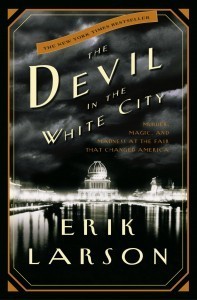 Timebound’s historical destination is a well-documented Sweeney Todd-like tale. Another book, Erik Larson’s The Devil in the White City: A Saga of Magic and Murder at the Fair that Changed America, is a 2004 narrative nonfiction treatment from Vintage of the same material, optioned by Leonardo DiCaprio for a possible film treatment.
Timebound’s historical destination is a well-documented Sweeney Todd-like tale. Another book, Erik Larson’s The Devil in the White City: A Saga of Magic and Murder at the Fair that Changed America, is a 2004 narrative nonfiction treatment from Vintage of the same material, optioned by Leonardo DiCaprio for a possible film treatment.
H.H. Holmes, sometimes described as the first modern US serial killer, used the 1893 World’s Fair in Chicago as the rationale for what Walker describes as a “women’s hotel.” She tells me:
Nobody really knows how many people he killed. He didn’t even know because he had a lime pit in the basement of his hotel, he’d slide the bodies down there. And so many women were coming in to Chicago for the World’s Fair, either as visitors or, in a lot of cases, for work. He set it up [his "castle," as it's described in some accounts] as a hotel catering to women. And a lot of women disappeared.
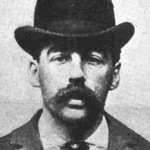
H.H. Holmes in an 1895 mug shot | Wikipedia.com
Paralleling her experience of the stigma attached to self-published work, Walker says that her earlier writings carry their own kind of impediment.
“I have written some academic work, but I found out that was more of a deficit.” To mention academic writing, she says, makes people think “four-thousand footnotes and probably not a very good plot.”
Nevertheless, Walker’s original preparation in Time’s Twisted Arrow, the self-published predecessor to Timebound, she concedes, wasn’t what she’d like it to have been.
It had a number of beta readers. I did not use a professional editor because, to be honest, I couldn’t find one I could afford. I’ve done some editing on my own. And although you should never, ever edit your own work, I did. And there are a few typos in the Time’s Twisted Arrow version to prove it, because your eye just ends to gloss over the error.
But I also had beta readers including two young-adult authors. And a couple of friends whose opinions I really respected. One of them told me, “This is good. If you’re not getting any feedback from agents, just get it out there.”
 Walker says she likes the idea of the “professional betas” discussed in Tuesday’s Ether for Authors at Publishing Perspectives, “if they’ll actually catch continuity errors” and other such editorial details, as well as being pre-publication audience-reaction predictors.
Walker says she likes the idea of the “professional betas” discussed in Tuesday’s Ether for Authors at Publishing Perspectives, “if they’ll actually catch continuity errors” and other such editorial details, as well as being pre-publication audience-reaction predictors.
One of Walker’s children, a son, was a primary reader for her.
He zips through YA novels like potato chips. And he was able to spot a lot of things for me. It helped when they were sending me covers. One had curlicue fonts. All the boys in the family were like, “No, I would not pick up that book because somebody might see me looking at it.”….Having that input from the group you’re targeting is invaluable.
Once her book had gone into competition for the Breakthrough Award and was ready for customer votes in the final stage of the contest, the facts that she’d been in touch with groups of young readers and that she had her book self-published, she says, were advantages.
That last stage is a matter of whether you can get out the vote. There were several hundred readers out there, maybe more than that, who had read the book, liked the book [as Time's Twisted Arrow]. I was able to contact them and say, “Spread the word.”
Screech of an incoming fax. Just another typical day here in 1991.
— Carolyn Kellogg (@paperhaus) June 17, 2013
About three weeks ago, she took down the original Time’s Twisted Arrow to be sure that readers don’t mistake Timebound in October for the second book in the series.
On the wider scale, and in answer to the question in Greenfield’s headline, of course authors and agents will certainly notice not only the million-selling coup of Oliver Pötzsch’s series but also the arrival of the Walker Timebound and four other handsomely awarded contracts moving to the market in October.
@frankiesachs That tradition is shifting here. Check out the 5 finalists in Amazon’s Breakthrough Novel contest: http://t.co/32tktLFmA7
— Mathew Paust (@MattPaust) June 16, 2013
While its challenges are contemporary, Amazon Publishing may have had no more difficulty finding traction in the market in its first couple of years than many of the well-established houses initially experienced decades ago. The “breakthroughs” celebrated over the weekend may not lie only in those contracts for writers.
And however many in Old Publishing may still decry Amazon Publishing as an incursion, many entrepreneurial authors recognize it as a new-work-nourishing player indigenous to an unprecedented global marketplace.
On the personal level, Walker says that her big win ends up validating friends and family who have believed in her work as much as it does her own effort.
My sister who went to the award ceremony with me [last Saturday at Seattle's Olympic Sculpture Park] has had very high hopes for the book. She kept saying, “It’s really, really good.” And I kept saying, “But, Donna, wouldn’t you tell me that even if you didn’t think it was really good?” She said, “Yes, I would. But it’s really good.” And I said, “Okay, sorry, but you don’t have much credibility on that point.”
And now? She’s saying, “Yes I do have credibility on that point now. I’ve been validated by this award, too.”
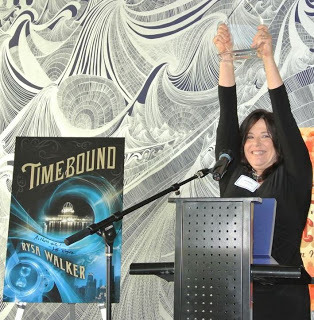
Rysa Walker at the Amazon Breakthrough Novel Award ceremony in Seattle, June 15, 2013.
The bestselling thriller writer Vince Flynn has died from prostate cancer. He was just 47 years old. http://t.co/XiyuIetwre (h/t @mdash)
— Sarah Weinman (@sarahw) June 19, 2013
Main image: iStockphoto – NickP37
The post WRITING ON THE ETHER: While You Were Bashing Amazon appeared first on Jane Friedman and was written by Porter Anderson.
WRITING ON THE ETHER: While You Were Bashing Amazon
Table of Contents
Seattle Hands $110,000 to Five Authors
Dr. Walniuk Is in the House
The “Devil” Is in the Details
Seattle Hands $110,000 to Five Authors
My feet have started to touch the ground again. I was pretty floaty there for a while.
Sitting down?.

Rysa Walker
She got a publishing contract and a $50,000 advance for her debut YA self-published novel.
The novel for which author Rysa Walker has just received that advance started life as the self-published Time’s Twisted Arrow.
When Amazon Publishing releases it on October 22, it will be titled Timebound.
 And will have been re-edited and prepared with its new cover as a fully vested catalog offering from the Skyscape imprint, part of Amazon Children’s Publishing.
And will have been re-edited and prepared with its new cover as a fully vested catalog offering from the Skyscape imprint, part of Amazon Children’s Publishing.
And it’s her first.
As long as you’re sitting there weeping, I’ll just mention Walker’s four co-finalists in the Amazon Breakthrough Novel Award competition. Why let those Kleenexes go to waste?
 These four authors now are first prize winners. They each have been given a contract with a $15,000 advance. They are:
These four authors now are first prize winners. They each have been given a contract with a $15,000 advance. They are:
Ken Moraff in Ithaca, New York, whose winning book is It Happened in Wisconsin, is the general fiction category winner, about a Depression-era baseball team and the dynamics of its players relationships.
 Jo Chumas, a journalist in Barcelona. Her book, The Hidden, is the winner in the mystery and thriller category. Set in the Egyptian Sinai in the 1940s, it combines “brutal murder,” revolution and old diary writings.Chumas book will be published in October on the Thomas & Mercer imprint.
Jo Chumas, a journalist in Barcelona. Her book, The Hidden, is the winner in the mystery and thriller category. Set in the Egyptian Sinai in the 1940s, it combines “brutal murder,” revolution and old diary writings.Chumas book will be published in October on the Thomas & Mercer imprint.
(Book PR copy always says “brutally murdered.” No one is ever just murdered. They’re “brutally murdered.” Never “gently murdered,” “softly murdered,” “mildly murdered,” “thoughtfully murdered.” That’s because murder by any means is brutal. Just “murdered” is all you need. The “brutality” is hype.)
 Evelyn Pryce, whose winning book, A Man Beyond Reproach, is also a debut effort. This one is the romance-category winner, set in 1830s London and a bordello that seems to cater to noblemen who might become Shirtless Men Kissing Beautiful Women. this one will be out in October on the Montlake Romance imprint.
Evelyn Pryce, whose winning book, A Man Beyond Reproach, is also a debut effort. This one is the romance-category winner, set in 1830s London and a bordello that seems to cater to noblemen who might become Shirtless Men Kissing Beautiful Women. this one will be out in October on the Montlake Romance imprint.
J. Lincoln Fenn “began her career in horror,” her bio says. This is true of so many of us, isn’t it?
 No, seriously, her book, Poe—winner in the sci-fi, fantasy, and horror category of the competition—is set on Halloween and features a Rasputin zombie-novelist who writes obits for a living. I hope it quotes a raven, too. With a title like Poe, this one simply has to come out on the 47North imprint.
No, seriously, her book, Poe—winner in the sci-fi, fantasy, and horror category of the competition—is set on Halloween and features a Rasputin zombie-novelist who writes obits for a living. I hope it quotes a raven, too. With a title like Poe, this one simply has to come out on the 47North imprint.
I’d be interested in hearing of other publishers in the industry! the industry! that have cultivated new fiction so richly and in such a readership-involving way as Amazon Publishing’s global voting stage that asks readers, themselves, to gauge the material.
And once you’ve pulled yourself together, we’re going to spend some time here with the grand-prize winner, Rysa Walker, whose experience and approach reflect the way Amazon’s program is not only producing work but also nurturing it.
For her part, Walker—that first name is pronounced “RYE-sa”—tells me in a phone interview from her home in Cary, North Carolina, “I’ve actually made a lot of friends in the indie community. I spent the last year trying to market what was then Time’s Twisted Arrow,” her winning manuscript which she’d published, herself.
I’ve lost my breakthrough notes for my MG novel. I would scream, but why alarm the pets?
— Sarah Herlong (@HerlongSarah) June 20, 2013
Self-publication wasn’t a requirement of the competition, nor was it a problem. The rules of the Breakthrough Novel Award program prohibit entering material that has been under a publishing contract currently or previously. But as long as the rights have never left the author, an entry is valid. The entry period is normally in mid- to late-January. Up to 10,000 people can make one entry each. The competition, and the voting on the winners, is international and goes through several stages of selection and elimination. Walker remembers her self-published effort not quite languishing but not taking off, either. “I got a lot of good reviews. I won’t even tell you it was selling okay. It was tolerable, a few sales a week. For an indie author, that being my first book, and knowing it was part of a series, that was hopeful.”
Working on my alt lit breakthrough novel
— Dr. Crop (@Dr_Cop) June 17, 2013
Now, of course, what will publish as Timebound in October looks much more than merely hopeful. And it’s the first in a three-volume series, Walker says.
I never thought I’d get past the point of the free Publishers Weekly review [at the semi-finalist stage]. That was really my goal. I was hoping not to have to pay for an indie review.
 Walker makes a point familiar to many self-publishing authors: despite the fact that authors must pay their way into both Kirkus’ and Publishers Weekly’s programs for self-published writers, the resulting reviews will label the work as independent.
Walker makes a point familiar to many self-publishing authors: despite the fact that authors must pay their way into both Kirkus’ and Publishers Weekly’s programs for self-published writers, the resulting reviews will label the work as independent.
 Kirkus Indie offers a review at rates of $425 for a standard review and $575 for an express review.
Kirkus Indie offers a review at rates of $425 for a standard review and $575 for an express review.
Publishers Weekly offers the possibility of a review (PW makes the choice) with a PW Select registration for a listing at $149 for self-published books.
Walker:
I was reviewed at Kirkus, and it was a very positive review. But I had to pay for it and it was still “Kirkus Indie.” Some people look at that, and they dismiss it, even though you can pay that money and get a bad review. I know plenty of people who have done that. But people still see this as a “paid review” and therefore not valid.
The stigma [about self-publishing] is not gone yet. I read an article yesterday that ripped into indies, saying that 95 percent of what’s out there is bad and it’s degrading the publishing industry because people don’t know where to find a good book. And there is some truth to that, but I’ve read some pretty bad traditionally published books, too. Maybe not as many grammatical errors, but there are other issues, too.

Polly Courtney
In an interesting parallel, British author Polly Courtney’s new Q&A at the Guardian, ‘Now I’m back to self-publishing, I’ve regained control’, has some pointed comments about her experience in working on a contract with HarperCollins.
Her new, self-published book, Feral Youth—involving the 2011 London riots—is scheduled for an August 1 availability in the States.
When I signed with HarperCollins, I thought “Great! This is the golden ticket I’ve been waiting for!” I thought it would be a great collaboration between me and the publisher, given my success self-publishing my first two novels. The reality was a big disappointment. The publisher seemed intent on pushing my books into pre-existing moulds (“misery lit”, “chick lit”) that didn’t reflect the contents.
“Brand Polly Courtney” was increasingly muddled, leading to confusion for readers. It turned out that my editor hadn’t actually read my first two books. There was no marketing budget, which meant that it was up to me to promote each book. This wasn’t a problem per se, but my job was made hard by the frivolous book covers and titles assigned to them. I actually felt ashamed of the product. Now I’m back to self-publishing, I’ve regained control.
Had a great time last night at Amazon Breakthrough Novel awards dinner yucking it up with G.M. Ford, Vince Keenan… http://t.co/C5v2tZ5BKx
— Michael Sherer (@MysteryNovelist) June 16, 2013
If anything, Walker seems to be just as happily making the trip the other direction, from self-published writer to an Amazon Publishing (traditional) author. She’s impressed at the agility of the company, she says. By the time the Breakthrough competition’s five finalists were chosen, “they were in high gear,” she says, creating cover art, putting her book through its first developmental edit (which she liked), so that the quintet of winners will all publish in a smart time-frame, on October 22, “while the buzz is still there.” And it’s a moment of new buzz for Amazon Publishing, as well.

Oliver Pötzsch
As covered by Digital Book World’s Jeremy Greenfield at Forbes, the company has found a million-copy seller in the German author Oliver Pötzsch, translating the Hangman’s Daughter series on the AmazonCrossing imprint. In Amazon Publishing Has First Million-Copy Hit; Will Authors, Agents Take Notice?  Greenfield writes:
Greenfield writes:
His Hangman’s Daughter series has sold over a million copies of three titles between print, ebook and audio-book sales…“One big question is how much of the sale came from Harcourt’s print edition?” said Mike Shatzkin, a publishing industry consultant and conference programmer for Digital Book World. “When there’s an Amazon-Harcourt partnership, the resistance should be much less.”
The Harcourt arrangement with Amazon places Amazon Publishing print editions in cooperating bookstores. Greenfield quotes Forrester’s James McQuivey, himself an Amazon Publishing author of Digital Disruption: Unleashing the Next Wave of Innovation:
I don’t think Barnes & Noble will be moved but indie bookstores might look to this and say, “We want to have the books that people want to read. You might want to take a moral stand but you might also want to sell books. So you could try putting some Amazon books in there and if they don’t sell, maybe you do a little victory dance and if they do sell, well, that’s money.
Meanwhile, there’s no shortage of victory dancing for the grand prize winner of Amazon Publishing’s Breakthrough Novel competition.
When we were judging the 50 Shades marketing campaign last week, they had reader testimonials.
— Sam Missingham (@samatlounge) June 20, 2013
My favourite was: ‘Can’t wait to read the next book. The old man’s away all week.’
— Sam Missingham (@samatlounge) June 20, 2013
Dr. Walniuk Is in the House
One of my goals in writing this series of YA books has been to get younger readers interested in real history.
 A longtime educator in history and government, Walker’s real name is Dr. Cheryl Walniuk. She teaches through the University of Maryland’s University College online program. Her CHRONOS Files site, the online home for her three-part series of books, includes information for educators in which she explains her interest in writing historical fiction. Somewhat like Courtney’s writings, Walker’s YA material is backed by an interest in youth culture. To her fellow teachers, she writes:
A longtime educator in history and government, Walker’s real name is Dr. Cheryl Walniuk. She teaches through the University of Maryland’s University College online program. Her CHRONOS Files site, the online home for her three-part series of books, includes information for educators in which she explains her interest in writing historical fiction. Somewhat like Courtney’s writings, Walker’s YA material is backed by an interest in youth culture. To her fellow teachers, she writes:
My own love of history began with the stacks of historical novels that I always found lying in dusty corners at my grandmother’s house. By the time I was in graduate school, I realized that much of the “history” I’d gotten from those books was rather suspect, but I’m not sure if I would have ever become a professor of history and government if those books hadn’t gotten me interested enough that I wanted to dig deeper and learn more.
Walniuk’s blog section at CHRONOS Files includes a call for student submissions, with full instructions here. If you know a young person who might enjoy learning how to study history through through the eyes of a supposed time-traveling observer, check it out and see if it’s something you’d like to guide them toward.
Just had a haircut from Zen stylist. She – what you you been up today? Me:(mumbling incoherently.) She: Aah, you’ve been finding yourself.
— Asta (@GapingWomen) June 18, 2013
Walniuk/Walker is hoping that her fictional formulation of a so-called CHRONOS time-traveling designer gene (Chrono-Historical Research Organization and Natural Observation Society) will inspire young people to start “using primary sources in a creative writing assignment.” She’s hoping to promote students’ own writings in alignment with the Library of Congress’ Common Core initiative.
Godot’s late.
— Michael Crossan (@MichaelCrossann) June 17, 2013
In teaching at the university level, Walniuk says, “we get so many students who haven’t a clue what a primary source is, let alone how you might find it, how you might use it.” Her own work as Rysa Walker is a way of modeling the right approach. And if you’ve assumed that Amazon’s big prize has gone to some time-tunneling ditty about happy moments in the Belle Époque, think again.
@Ginger_Clark “whinger”
— Don Linn (@DonLinn) June 19, 2013
The “Devil” Is in the Details
 Timebound’s historical destination is a well-documented Sweeney Todd-like tale. Another book, Erik Larson’s The Devil in the White City: A Saga of Magic and Murder at the Fair that Changed America, is a 2004 narrative nonfiction treatment from Vintage of the same material, optioned by Leonardo DiCaprio for a possible film treatment.
Timebound’s historical destination is a well-documented Sweeney Todd-like tale. Another book, Erik Larson’s The Devil in the White City: A Saga of Magic and Murder at the Fair that Changed America, is a 2004 narrative nonfiction treatment from Vintage of the same material, optioned by Leonardo DiCaprio for a possible film treatment.
H.H. Holmes, sometimes described as the first modern US serial killer, used the 1893 World’s Fair in Chicago as the rationale for what Walker describes as a “women’s hotel.” She tells me:
Nobody really knows how many people he killed. He didn’t even know because he had a lime pit in the basement of his hotel, he’d slide the bodies down there. And so many women were coming in to Chicago for the World’s Fair, either as visitors or, in a lot of cases, for work. He set it up [his "castle," as it's described in some accounts] as a hotel catering to women. And a lot of women disappeared.

H.H. Holmes in an 1895 mug shot | Wikipedia.com
Paralleling her experience of the stigma attached to self-published work, Walker says that her earlier writings carry their own kind of impediment.
“I have written some academic work, but I found out that was more of a deficit.” To mention academic writing, she says, makes people think “four-thousand footnotes and probably not a very good plot.”
Nevertheless, Walker’s original preparation in Time’s Twisted Arrow, the self-published predecessor to Timebound, she concedes, wasn’t what she’d like it to have been.
It had a number of beta readers. I did not use a professional editor because, to be honest, I couldn’t find one I could afford. I’ve done some editing on my own. And although you should never, ever edit your own work, I did. And there are a few typos in the Time’s Twisted Arrow version to prove it, because your eye just ends to gloss over the error.
But I also had beta readers including two young-adult authors. And a couple of friends whose opinions I really respected. One of them told me, “This is good. If you’re not getting any feedback from agents, just get it out there.”
 Walker says she likes the idea of the “professional betas” discussed in Tuesday’s Ether for Authors at Publishing Perspectives, “if they’ll actually catch continuity errors” and other such editorial details, as well as being pre-publication audience-reaction predictors.
Walker says she likes the idea of the “professional betas” discussed in Tuesday’s Ether for Authors at Publishing Perspectives, “if they’ll actually catch continuity errors” and other such editorial details, as well as being pre-publication audience-reaction predictors.
One of Walker’s children, a son, was a primary reader for her.
He zips through YA novels like potato chips. And he was able to spot a lot of things for me. It helped when they were sending me covers. One had curlicue fonts. All the boys in the family were like, “No, I would not pick up that book because somebody might see me looking at it.”….Having that input from the group you’re targeting is invaluable.
Once her book had gone into competition for the Breakthrough Award and was ready for customer votes in the final stage of the contest, the facts that she’d been in touch with groups of young readers and that she had her book self-published, she says, were advantages.
That last stage is a matter of whether you can get out the vote. There were several hundred readers out there, maybe more than that, who had read the book, liked the book [as Time's Twisted Arrow]. I was able to contact them and say, “Spread the word.”
Screech of an incoming fax. Just another typical day here in 1991.
— Carolyn Kellogg (@paperhaus) June 17, 2013
About three weeks ago, she took down the original Time’s Twisted Arrow to be sure that readers don’t mistake Timebound in October for the second book in the series.
On the wider scale, and in answer to the question in Greenfield’s headline, of course authors and agents will certainly notice not only the million-selling coup of Oliver Pötzsch’s series but also the arrival of the Walker Timebound and four other handsomely awarded contracts moving to the market in October.
@frankiesachs That tradition is shifting here. Check out the 5 finalists in Amazon’s Breakthrough Novel contest: http://t.co/32tktLFmA7
— Mathew Paust (@MattPaust) June 16, 2013
While its challenges are contemporary, Amazon Publishing may have had no more difficulty finding traction in the market in its first couple of years than many of the well-established houses initially experienced decades ago. The “breakthroughs” celebrated over the weekend may not lie only in those contracts for writers.
And however many in Old Publishing may still decry Amazon Publishing as an incursion, many entrepreneurial authors recognize it as a new-work-nourishing player indigenous to an unprecedented global marketplace.
On the personal level, Walker says that her big win ends up validating friends and family who have believed in her work as much as it does her own effort.
My sister who went to the award ceremony with me [last Saturday at Seattle's Olympic Sculpture Park] has had very high hopes for the book. She kept saying, “It’s really, really good.” And I kept saying, “But, Donna, wouldn’t you tell me that even if you didn’t think it was really good?” She said, “Yes, I would. But it’s really good.” And I said, “Okay, sorry, but you don’t have much credibility on that point.”
And now? She’s saying, “Yes I do have credibility on that point now. I’ve been validated by this award, too.”

Rysa Walker at the Amazon Breakthrough Novel Award ceremony in Seattle, June 15, 2013.
The bestselling thriller writer Vince Flynn has died from prostate cancer. He was just 47 years old. http://t.co/XiyuIetwre (h/t @mdash)
— Sarah Weinman (@sarahw) June 19, 2013
Main image: iStockphoto – NickP37
The post WRITING ON THE ETHER: While You Were Bashing Amazon appeared first on Jane Friedman.
Writing on the Ether: While You Were Bashing Amazon
Table of Contents
Seattle Hands $110,000 to Five Authors
Dr. Walniuk Is in the House
The “Devil” Is in the Details
Seattle Hands $110,000 to Five Authors
My feet have started to touch the ground again. I was pretty floaty there for a while.
Sitting down?.

Rysa Walker
She got a publishing contract and a $50,000 advance for her debut YA self-published novel.
The novel for which author Rysa Walker has just received that advance started life as the self-published Time’s Twisted Arrow.
When Amazon Publishing releases it on October 22, it will be titled Timebound.
 And will have been re-edited and prepared with its new cover as a fully vested catalog offering from the Skyscape imprint, part of Amazon Children’s Publishing.
And will have been re-edited and prepared with its new cover as a fully vested catalog offering from the Skyscape imprint, part of Amazon Children’s Publishing.
And it’s her first.
As long as you’re sitting there weeping, I’ll just mention Walker’s four co-finalists in the Amazon Breakthrough Novel Award competition. Why let those Kleenexes go to waste?
 These four authors now are first prize winners. They each have been given a contract with a $15,000 advance. They are:
These four authors now are first prize winners. They each have been given a contract with a $15,000 advance. They are:
Ken Moraff in Ithaca, New York, whose winning book is It Happened in Wisconsin, is the general fiction category winner, about a Depression-era baseball team and the dynamics of its players relationships.
 Jo Chumas, a journalist in Barcelona. Her book, The Hidden, is the winner in the mystery and thriller category. Set in the Egyptian Sinai in the 1940s, it combines “brutal murder,” revolution and old diary writings.Chumas book will be published in October on the Thomas & Mercer imprint.
Jo Chumas, a journalist in Barcelona. Her book, The Hidden, is the winner in the mystery and thriller category. Set in the Egyptian Sinai in the 1940s, it combines “brutal murder,” revolution and old diary writings.Chumas book will be published in October on the Thomas & Mercer imprint.
(Book PR copy always says “brutally murdered.” No one is ever just murdered. They’re “brutally murdered.” Never “gently murdered,” “softly murdered,” “mildly murdered,” “thoughtfully murdered.” That’s because murder by any means is brutal. Just “murdered” is all you need. The “brutality” is hype.)
 Evelyn Pryce, whose winning book, A Man Beyond Reproach, is also a debut effort. This one is the romance-category winner, set in 1830s London and a bordello that seems to cater to noblemen who might become Shirtless Men Kissing Beautiful Women. this one will be out in October on the Montlake Romance imprint.
Evelyn Pryce, whose winning book, A Man Beyond Reproach, is also a debut effort. This one is the romance-category winner, set in 1830s London and a bordello that seems to cater to noblemen who might become Shirtless Men Kissing Beautiful Women. this one will be out in October on the Montlake Romance imprint.
J. Lincoln Fenn “began her career in horror,” her bio says. This is true of so many of us, isn’t it?
 No, seriously, her book, Poe—winner in the sci-fi, fantasy, and horror category of the competition—is set on Halloween and features a Rasputin zombie-novelist who writes obits for a living. I hope it quotes a raven, too. With a title like Poe, this one simply has to come out on the 47North imprint.
No, seriously, her book, Poe—winner in the sci-fi, fantasy, and horror category of the competition—is set on Halloween and features a Rasputin zombie-novelist who writes obits for a living. I hope it quotes a raven, too. With a title like Poe, this one simply has to come out on the 47North imprint.
I’d be interested in hearing of other publishers in the industry! the industry! that have cultivated new fiction so richly and in such a readership-involving way as Amazon Publishing’s global voting stage that asks readers, themselves, to gauge the material.
And once you’ve pulled yourself together, we’re going to spend some time here with the grand-prize winner, Rysa Walker, whose experience and approach reflect the way Amazon’s program is not only producing work but also nurturing it.
For her part, Walker—that first name is pronounced “RYE-sa”—tells me in a phone interview from her home in Cary, North Carolina, “I’ve actually made a lot of friends in the indie community. I spent the last year trying to market what was then Time’s Twisted Arrow,” her winning manuscript which she’d published, herself.
I’ve lost my breakthrough notes for my MG novel. I would scream, but why alarm the pets?
— Sarah Herlong (@HerlongSarah) June 20, 2013
Self-publication wasn’t a requirement of the competition, nor was it a problem. The rules of the Breakthrough Novel Award program prohibit entering material that has been under a publishing contract currently or previously. But as long as the rights have never left the author, an entry is valid. The entry period is normally in mid- to late-January. Up to 10,000 people can make one entry each. The competition, and the voting on the winners, is international and goes through several stages of selection and elimination. Walker remembers her self-published effort not quite languishing but not taking off, either. “I got a lot of good reviews. I won’t even tell you it was selling okay. It was tolerable, a few sales a week. For an indie author, that being my first book, and knowing it was part of a series, that was hopeful.”
Working on my alt lit breakthrough novel
— Dr. Crop (@Dr_Cop) June 17, 2013
Now, of course, what will publish as Timebound in October looks much more than merely hopeful. And it’s the first in a three-volume series, Walker says.
I never thought I’d get past the point of the free Publishers Weekly review [at the semi-finalist stage]. That was really my goal. I was hoping not to have to pay for an indie review.
 Walker makes a point familiar to many self-publishing authors: despite the fact that authors must pay their way into both Kirkus’ and Publishers Weekly’s programs for self-published writers, the resulting reviews will label the work as independent.
Walker makes a point familiar to many self-publishing authors: despite the fact that authors must pay their way into both Kirkus’ and Publishers Weekly’s programs for self-published writers, the resulting reviews will label the work as independent.
 Kirkus Indie offers a review at rates of $425 for a standard review and $575 for an express review.
Kirkus Indie offers a review at rates of $425 for a standard review and $575 for an express review.
Publishers Weekly offers the possibility of a review (PW makes the choice) with a PW Select registration for a listing at $149 for self-published books.
Walker:
I was reviewed at Kirkus, and it was a very positive review. But I had to pay for it and it was still “Kirkus Indie.” Some people look at that, and they dismiss it, even though you can pay that money and get a bad review. I know plenty of people who have done that. But people still see this as a “paid review” and therefore not valid.
The stigma [about self-publishing] is not gone yet. I read an article yesterday that ripped into indies, saying that 95 percent of what’s out there is bad and it’s degrading the publishing industry because people don’t know where to find a good book. And there is some truth to that, but I’ve read some pretty bad traditionally published books, too. Maybe not as many grammatical errors, but there are other issues, too.

Polly Courtney
In an interesting parallel, British author Polly Courtney’s new Q&A at the Guardian, ‘Now I’m back to self-publishing, I’ve regained control’, has some pointed comments about her experience in working on a contract with HarperCollins.
Her new, self-published book, Feral Youth—involving the 2011 London riots—is scheduled for an August 1 availability in the States.
When I signed with HarperCollins, I thought “Great! This is the golden ticket I’ve been waiting for!” I thought it would be a great collaboration between me and the publisher, given my success self-publishing my first two novels. The reality was a big disappointment. The publisher seemed intent on pushing my books into pre-existing moulds (“misery lit”, “chick lit”) that didn’t reflect the contents.
“Brand Polly Courtney” was increasingly muddled, leading to confusion for readers. It turned out that my editor hadn’t actually read my first two books. There was no marketing budget, which meant that it was up to me to promote each book. This wasn’t a problem per se, but my job was made hard by the frivolous book covers and titles assigned to them. I actually felt ashamed of the product. Now I’m back to self-publishing, I’ve regained control.
Had a great time last night at Amazon Breakthrough Novel awards dinner yucking it up with G.M. Ford, Vince Keenan… http://t.co/C5v2tZ5BKx
— Michael Sherer (@MysteryNovelist) June 16, 2013
If anything, Walker seems to be just as happily making the trip the other direction, from self-published writer to an Amazon Publishing (traditional) author. She’s impressed at the agility of the company, she says. By the time the Breakthrough competition’s five finalists were chosen, “they were in high gear,” she says, creating cover art, putting her book through its first developmental edit (which she liked), so that the quintet of winners will all publish in a smart time-frame, on October 22, “while the buzz is still there.” And it’s a moment of new buzz for Amazon Publishing, as well.

Oliver Pötzsch
As covered by Digital Book World’s Jeremy Greenfield at Forbes, the company has found a million-copy seller in the German author Oliver Pötzsch, translating the Hangman’s Daughter series on the AmazonCrossing imprint. In Amazon Publishing Has First Million-Copy Hit; Will Authors, Agents Take Notice?  Greenfield writes:
Greenfield writes:
His Hangman’s Daughter series has sold over a million copies of three titles between print, ebook and audio-book sales…“One big question is how much of the sale came from Harcourt’s print edition?” said Mike Shatzkin, a publishing industry consultant and conference programmer for Digital Book World. “When there’s an Amazon-Harcourt partnership, the resistance should be much less.”
The Harcourt arrangement with Amazon places Amazon Publishing print editions in cooperating bookstores. Greenfield quotes Forrester’s James McQuivey, himself an Amazon Publishing author of Digital Disruption: Unleashing the Next Wave of Innovation:
I don’t think Barnes & Noble will be moved but indie bookstores might look to this and say, “We want to have the books that people want to read. You might want to take a moral stand but you might also want to sell books. So you could try putting some Amazon books in there and if they don’t sell, maybe you do a little victory dance and if they do sell, well, that’s money.
Meanwhile, there’s no shortage of victory dancing for the grand prize winner of Amazon Publishing’s Breakthrough Novel competition.
When we were judging the 50 Shades marketing campaign last week, they had reader testimonials.
— Sam Missingham (@samatlounge) June 20, 2013
My favourite was: ‘Can’t wait to read the next book. The old man’s away all week.’
— Sam Missingham (@samatlounge) June 20, 2013
Dr. Walniuk Is in the House
One of my goals in writing this series of YA books has been to get younger readers interested in real history.
 A longtime educator in history and government, Walker’s real name is Dr. Cheryl Walniuk. She teaches through the University of Maryland’s University College online program. Her CHRONOS Files site, the online home for her three-part series of books, includes information for educators in which she explains her interest in writing historical fiction. Somewhat like Courtney’s writings, Walker’s YA material is backed by an interest in youth culture. To her fellow teachers, she writes:
A longtime educator in history and government, Walker’s real name is Dr. Cheryl Walniuk. She teaches through the University of Maryland’s University College online program. Her CHRONOS Files site, the online home for her three-part series of books, includes information for educators in which she explains her interest in writing historical fiction. Somewhat like Courtney’s writings, Walker’s YA material is backed by an interest in youth culture. To her fellow teachers, she writes:
My own love of history began with the stacks of historical novels that I always found lying in dusty corners at my grandmother’s house. By the time I was in graduate school, I realized that much of the “history” I’d gotten from those books was rather suspect, but I’m not sure if I would have ever become a professor of history and government if those books hadn’t gotten me interested enough that I wanted to dig deeper and learn more.
Walniuk’s blog section at CHRONOS Files includes a call for student submissions, with full instructions here. If you know a young person who might enjoy learning how to study history through through the eyes of a supposed time-traveling observer, check it out and see if it’s something you’d like to guide them toward.
Just had a haircut from Zen stylist. She – what you you been up today? Me:(mumbling incoherently.) She: Aah, you’ve been finding yourself.
— Asta (@GapingWomen) June 18, 2013
Walniuk/Walker is hoping that her fictional formulation of a so-called CHRONOS time-traveling designer gene (Chrono-Historical Research Organization and Natural Observation Society) will inspire young people to start “using primary sources in a creative writing assignment.” She’s hoping to promote students’ own writings in alignment with the Library of Congress’ Common Core initiative.
Godot’s late.
— Michael Crossan (@MichaelCrossann) June 17, 2013
In teaching at the university level, Walniuk says, “we get so many students who haven’t a clue what a primary source is, let alone how you might find it, how you might use it.” Her own work as Rysa Walker is a way of modeling the right approach. And if you’ve assumed that Amazon’s big prize has gone to some time-tunneling ditty about happy moments in the Belle Époque, think again.
@Ginger_Clark “whinger”
— Don Linn (@DonLinn) June 19, 2013
The “Devil” Is in the Details
 Timebound’s historical destination is a well-documented Sweeney Todd-like tale. Another book, Erik Larson’s The Devil in the White City: A Saga of Magic and Murder at the Fair that Changed America, is a 2004 narrative nonfiction treatment from Vintage of the same material, optioned by Leonardo DiCaprio for a possible film treatment.
Timebound’s historical destination is a well-documented Sweeney Todd-like tale. Another book, Erik Larson’s The Devil in the White City: A Saga of Magic and Murder at the Fair that Changed America, is a 2004 narrative nonfiction treatment from Vintage of the same material, optioned by Leonardo DiCaprio for a possible film treatment.
H.H. Holmes, sometimes described as the first modern US serial killer, used the 1893 World’s Fair in Chicago as the rationale for what Walker describes as a “women’s hotel.” She tells me:
Nobody really knows how many people he killed. He didn’t even know because he had a lime pit in the basement of his hotel, he’d slide the bodies down there. And so many women were coming in to Chicago for the World’s Fair, either as visitors or, in a lot of cases, for work. He set it up [his "castle," as it's described in some accounts] as a hotel catering to women. And a lot of women disappeared.

H.H. Holmes in an 1895 mug shot | Wikipedia.com
Paralleling her experience of the stigma attached to self-published work, Walker says that her earlier writings carry their own kind of impediment.
“I have written some academic work, but I found out that was more of a deficit.” To mention academic writing, she says, makes people think “four-thousand footnotes and probably not a very good plot.”
Nevertheless, Walker’s original preparation in Time’s Twisted Arrow, the self-published predecessor to Timebound, she concedes, wasn’t what she’d like it to have been.
It had a number of beta readers. I did not use a professional editor because, to be honest, I couldn’t find one I could afford. I’ve done some editing on my own. And although you should never, ever edit your own work, I did. And there are a few typos in the Time’s Twisted Arrow version to prove it, because your eye just ends to gloss over the error.
But I also had beta readers including two young-adult authors. And a couple of friends whose opinions I really respected. One of them told me, “This is good. If you’re not getting any feedback from agents, just get it out there.”
 Walker says she likes the idea of the “professional betas” discussed in Tuesday’s Ether for Authors at Publishing Perspectives, “if they’ll actually catch continuity errors” and other such editorial details, as well as being pre-publication audience-reaction predictors.
Walker says she likes the idea of the “professional betas” discussed in Tuesday’s Ether for Authors at Publishing Perspectives, “if they’ll actually catch continuity errors” and other such editorial details, as well as being pre-publication audience-reaction predictors.
One of Walker’s children, a son, was a primary reader for her.
He zips through YA novels like potato chips. And he was able to spot a lot of things for me. It helped when they were sending me covers. One had curlicue fonts. All the boys in the family were like, “No, I would not pick up that book because somebody might see me looking at it.”….Having that input from the group you’re targeting is invaluable.
Once her book had gone into competition for the Breakthrough Award and was ready for customer votes in the final stage of the contest, the facts that she’d been in touch with groups of young readers and that she had her book self-published, she says, were advantages.
That last stage is a matter of whether you can get out the vote. There were several hundred readers out there, maybe more than that, who had read the book, liked the book [as Time's Twisted Arrow]. I was able to contact them and say, “Spread the word.”
Screech of an incoming fax. Just another typical day here in 1991.
— Carolyn Kellogg (@paperhaus) June 17, 2013
About three weeks ago, she took down the original Time’s Twisted Arrow to be sure that readers don’t mistake Timebound in October for the second book in the series.
On the wider scale, and in answer to the question in Greenfield’s headline, of course authors and agents will certainly notice not only the million-selling coup of Oliver Pötzsch’s series but also the arrival of the Walker Timebound and four other handsomely awarded contracts moving to the market in October.
@frankiesachs That tradition is shifting here. Check out the 5 finalists in Amazon’s Breakthrough Novel contest: http://t.co/32tktLFmA7
— Mathew Paust (@MattPaust) June 16, 2013
While its challenges are contemporary, Amazon Publishing may have had no more difficulty finding traction in the market in its first couple of years than many of the well-established houses initially experienced decades ago. The “breakthroughs” celebrated over the weekend may not lie only in those contracts for writers.
And however many in Old Publishing may still decry Amazon Publishing as an incursion, many entrepreneurial authors recognize it as a new-work-nourishing player indigenous to an unprecedented global marketplace.
On the personal level, Walker says that her big win ends up validating friends and family who have believed in her work as much as it does her own effort.
My sister who went to the award ceremony with me [last Saturday at Seattle's Olympic Sculpture Park] has had very high hopes for the book. She kept saying, “It’s really, really good.” And I kept saying, “But, Donna, wouldn’t you tell me that even if you didn’t think it was really good?” She said, “Yes, I would. But it’s really good.” And I said, “Okay, sorry, but you don’t have much credibility on that point.”
And now? She’s saying, “Yes I do have credibility on that point now. I’ve been validated by this award, too.”

Rysa Walker at the Amazon Breakthrough Novel Award ceremony in Seattle, June 15, 2013.
The bestselling thriller writer Vince Flynn has died from prostate cancer. He was just 47 years old. http://t.co/XiyuIetwre (h/t @mdash)
— Sarah Weinman (@sarahw) June 19, 2013
Main image: iStockphoto – NickP37
The post Writing on the Ether: While You Were Bashing Amazon appeared first on Jane Friedman.
June 17, 2013
How to Connect With More Readers in Just 5 Minutes by Toni Tesori

Photo by hatalmas / Flickr
Today’s guest post is by Toni Tesori (@duolit) of Duolit, which offers a free guided workbook, the Weekend Book Marketing Makeover.
You’ve been plugging away, day after day, trying to build the fan base you know your work deserves, but it’s not going the way you’d pictured when you started out. It’s like you’ve tried everything under the sun (including blogging, tweeting, and participating in promotion after promotion), but you can’t find passionate readers for your work.
It’s not that your book isn’t any good (you and your editor spent tons of time making sure it is) and it’s not that readers are uninterested in your genre (your author friends are selling books by the truckload).
Perhaps the problem is that your message simply isn’t connecting with readers on a personal level. Your tweets, blogs, and e-mails aren’t convincing them to check out your work.
It’s a problem I see quite often, and I’ve even given it a name: Superstar Author Syndrome. That might sound a bit backward, since you’re not (yet) on any sort of author walk of fame, but hear me out.
Authors with SAS commonly have an issue connecting with readers because their blogs, social media updates, and promotional materials sound too vague, almost corporate. There’s nothing personal or engaging for a potential reader to “hook” onto and remember.
That’s because those of us in charge of our own book promotion may be modeling our communications on our big-name brethren, most of whom have entire PR teams crafting those blog posts and whatnots for them. For Stephen King or James Patterson, using that impersonal, third-person speak in their website, tweets, or blogs may be entirely appropriate.
But for those of us trying to build a grassroots following, it’s a one-way ticket to obscurity.
Luckily, there’s an easy way to inject life into your marketing efforts.
Narrow your target
To find the perfect balance between professionalism and personality, craft your messages with just one crazy-dedicated fan in mind.
This may seem counterintuitive. After all, you’re probably trying to attract as many readers as possible. Won’t targeting a single reader exclude thousands of others who are nothing like that person?
Surprisingly, narrowing your promotional focus in this way helps you better connect with more readers by giving you (1) focus and (2) direction.
Gain focus
When you tailor your marketing decisions to one person, you’ll attract a wider variety of readers because your communications will sound far more personal and engaging. You’ll sound like a real human being having a conversation with folks who love your book.
Find direction
Targeting one reader helps you find marketing direction. Trying to figure out where to spend your limited book promotion time can be overwhelming and confusing, but having a unique person to center your marketing decisions around makes this task much easier. Instead of trying to figure out what appeals to everyone in your target market, you’ll be able to ask a single person. And it’s a lot easier to figure out what appeals to one person than thousands, right?
3 steps to create a No. 1 fan profile
Here’s how to craft a reader profile (kind of like a character profile) that will uncover your biggest fan. Keep in mind there is no right or wrong answer here. If you’ve met a few of your readers, base your profile on one of those folks. If you’re just starting out, simply imagine someone you think would love your work. And if that’s too difficult, but you’re a fan of your genre of work, answer the questions as yourself.
1. Picture someone reading your book and devouring every single word. Someone who’s dreading the book coming to an end.
2. Describe the person you see just like she’s a character in your book. If you have a preferred character profiling method, you may use that, or you may choose to answer the following questions:
Where is she reading your book? Describe the setting. Is she at home, on a train or out in the park? Is she in a chair, a bed, the bath?
How did she find your book? Is she reading an e-book or a paperback?
Fill in her personal details. What’s her name? Where does she live? How old is she? What does she look like?
3. While continuing to picture your No. 1 fan, think of two or three ways to connect with that person. Think about the following:
How does she choose books? Does she search for new titles on her own or follow the recommendations of her friends or family?
Where does she hang out online? Facebook, Twitter, GoodReads, blogs? What about offline? Is she in a book club? Does she have a favorite bookstore?
What are her other hobbies and interests? Are there any ways you can use those to reach out to other readers like her?
Now that you have a basic profile of your No. 1 fan, feel free to spend a bit more time fleshing it out. The more detailed your reader profile, the more effective it will be for helping you make those difficult marketing decisions.
The next time you craft a tweet, write a blog post, send an e-mail, or share an update on Facebook, think about your biggest fan and the profile you created. What type of content would she want to read (and share)? What wording would appeal to her? What promotion would she gladly take part in?
The answers of your biggest fan are sure to connect you with others just like her.
In the comments, let’s hear about your No. 1 fan. Do any of her characteristics surprise you? How will you use your reader profile to better focus your book marketing and promotional efforts?
The post How to Connect With More Readers in Just 5 Minutes appeared first on Jane Friedman and was written by Toni Tesori.
Jane Friedman
- Jane Friedman's profile
- 1882 followers






